What pap tests can detect. Pap Smear: A Comprehensive Guide to Cervical Cancer Screening
What is a Pap smear. How often should you get one. What do the results mean. How to prepare for a Pap test. What happens during the procedure. What are the risks and benefits of cervical cancer screening.
Understanding the Pap Smear: Your First Line of Defense Against Cervical Cancer
A Pap smear, also known as a Pap test, is a crucial medical examination used to detect early signs of cervical cancer in women. This simple yet effective screening tool has been instrumental in reducing cervical cancer rates worldwide by identifying precancerous changes in cervical cells before they develop into full-blown cancer.
The test is named after Dr. Georgios Papanikolaou, who pioneered the technique in the 1940s. Since then, it has become a cornerstone of women’s health, saving countless lives through early detection and intervention.
The Purpose of a Pap Smear
Why is a Pap smear so important? The primary goal of this test is to identify cellular changes in the cervix that could potentially lead to cancer. By detecting these changes early, healthcare providers can intervene before cancer develops or spreads, significantly improving treatment outcomes.

- Detect precancerous cell changes
- Identify cervical cancer in its earliest stages
- Monitor previous abnormal results
- Screen for HPV (when combined with HPV testing)
Who Needs a Pap Smear and How Often?
Determining the appropriate frequency for Pap smears depends on various factors, including age and individual risk factors. Current guidelines recommend:
- Women aged 21-65 should have a Pap smear every 3 years
- Women 30 and older can opt for combined Pap and HPV testing every 5 years
Are there exceptions to these guidelines? Yes, certain health conditions may necessitate more frequent screenings. These include:
- Previous abnormal Pap results or cervical cancer diagnosis
- HIV infection
- Weakened immune system due to organ transplant, chemotherapy, or chronic corticosteroid use
- Exposure to diethylstilbestrol (DES) before birth
It’s crucial to consult with your healthcare provider to determine the most appropriate screening schedule for your individual needs.
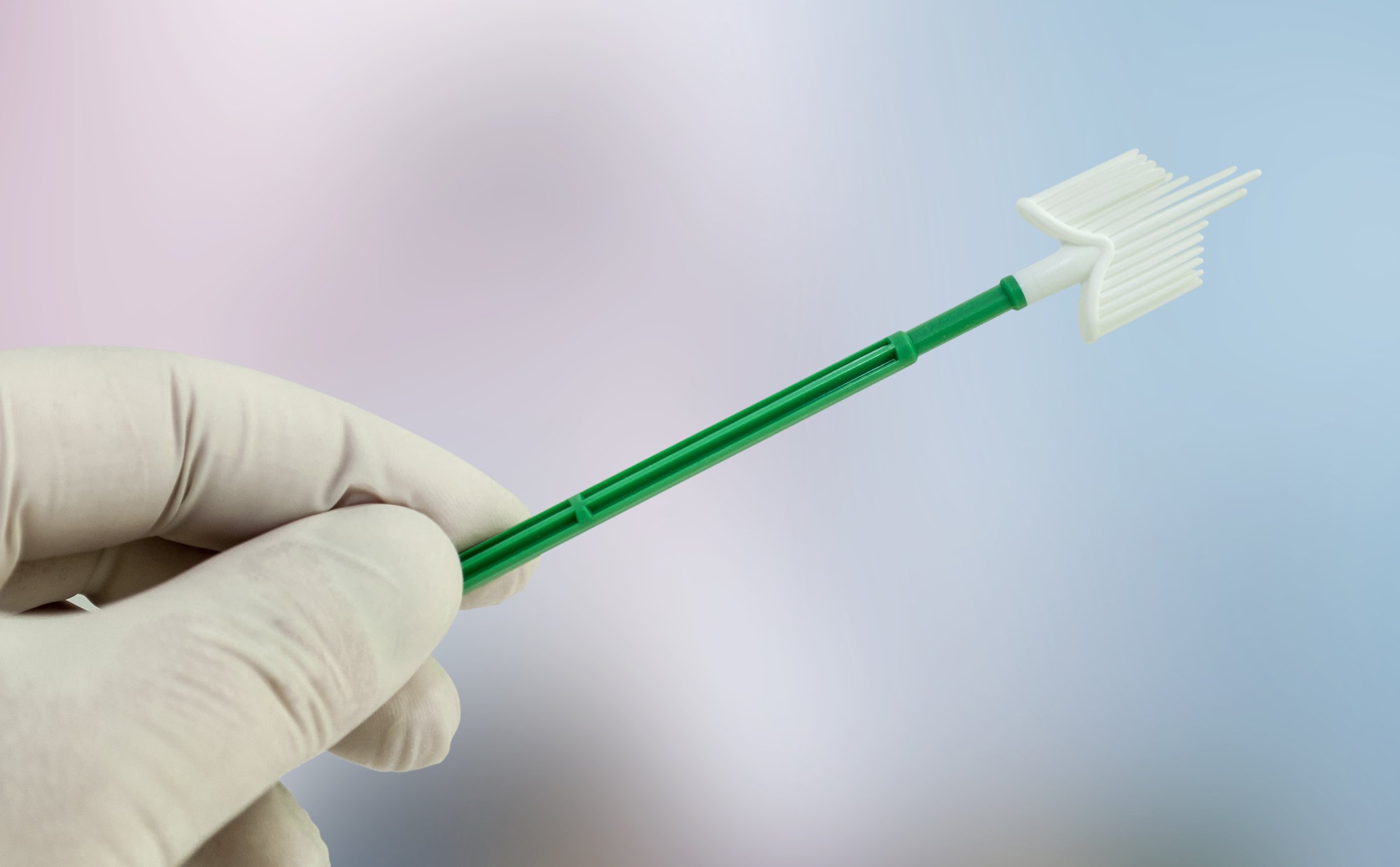
Preparing for Your Pap Smear: Ensuring Accurate Results
Proper preparation can significantly impact the accuracy of your Pap smear results. To ensure the most reliable outcome, follow these guidelines:
- Schedule your test when you’re not menstruating
- Avoid sexual intercourse for 48 hours before the test
- Don’t use vaginal lubricants for 48 hours before the test
- Refrain from using vaginal sprays or powders
- Avoid inserting anything into the vagina, including tampons, medications, creams, or suppositories
- Don’t douche or rinse the vagina with any solutions
By following these guidelines, you can help ensure that your Pap smear provides the most accurate results possible.
The Pap Smear Procedure: What to Expect During Your Exam
Understanding what happens during a Pap smear can help alleviate anxiety and ensure a more comfortable experience. Here’s a step-by-step breakdown of the procedure:
- You’ll lie on an examination table with your feet in stirrups
- The doctor will insert a speculum into your vagina to widen the vaginal walls
- A small brush or spatula will be used to collect cells from your cervix
- The collected cells are placed in a liquid substance and sent to a lab for analysis
Does a Pap smear hurt? While the procedure may cause some discomfort, it’s generally not painful. You might feel a slight pinch or pressure during cell collection, but this sensation is usually brief.
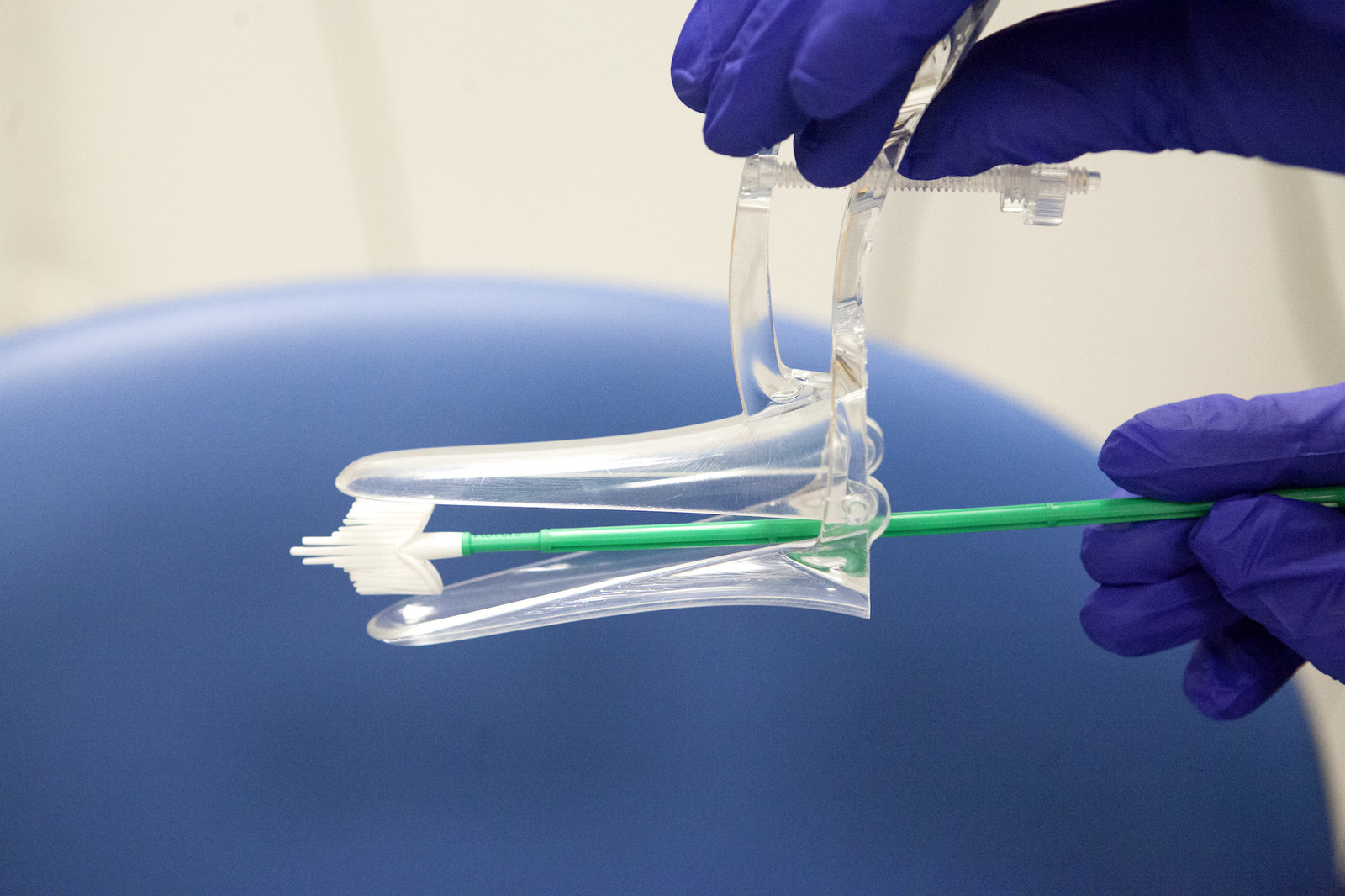
Interpreting Pap Smear Results: What Do They Mean?
After your Pap smear, the waiting game begins. Results typically come back within a few days, and they’ll be categorized as either negative (normal) or positive (abnormal). But what do these results actually mean?
Normal Pap Smear Results
A negative result is good news. It means that no abnormal cells were detected on your cervix. In this case, you can simply continue with your regular screening schedule as recommended by your healthcare provider.
Abnormal Pap Smear Results
An abnormal or positive result doesn’t necessarily mean you have cancer. There are several potential reasons for an abnormal Pap smear:
- Mild inflammation or minor cell changes (dysplasia)
- Human Papillomavirus (HPV) or other infections
- Precancerous or cancerous cells
- Laboratory error
What happens if your Pap smear is abnormal? Your doctor may recommend one of the following approaches:
- Repeat the Pap test in a few months to see if the abnormal cells have cleared on their own
- Perform additional tests, such as an HPV test or colposcopy, for further evaluation
- Recommend a biopsy if suspicious areas are identified during colposcopy
The Colposcopy Procedure: A Closer Look at Abnormal Cells
If your Pap smear results are abnormal, your doctor may recommend a colposcopy for a more detailed examination of your cervix. This procedure allows for a magnified view of the cervical tissue and helps identify areas that may require further testing.

What to Expect During a Colposcopy
- You’ll be positioned similarly to a Pap smear, with your feet in stirrups
- A speculum will be inserted to widen the vaginal walls
- The doctor will use a colposcope (a specialized microscope) to examine your cervix
- A vinegar solution may be applied to highlight any abnormal areas
- If suspicious areas are found, a small biopsy may be taken for further analysis
Is a colposcopy painful? While you may experience some discomfort during the procedure, particularly if a biopsy is taken, most women report that it’s not significantly more uncomfortable than a regular Pap smear.
The HPV Connection: Understanding the Link to Cervical Cancer
Human Papillomavirus (HPV) plays a crucial role in the development of cervical cancer. This common sexually transmitted infection is responsible for the majority of cervical cancer cases worldwide. But how exactly does HPV contribute to cancer development?
The HPV-Cervical Cancer Connection
- HPV is the most common sexually transmitted infection
- There are many types of HPV, but only some are considered high-risk for cancer
- Persistent infection with high-risk HPV types can lead to cellular changes in the cervix
- These changes, if left untreated, may progress to cervical cancer over time
Why is HPV testing important in cervical cancer screening? Combining HPV testing with Pap smears can provide a more comprehensive picture of a woman’s cervical health. This co-testing approach is particularly beneficial for women aged 30 and older, as it can help identify those at higher risk for developing cervical cancer.
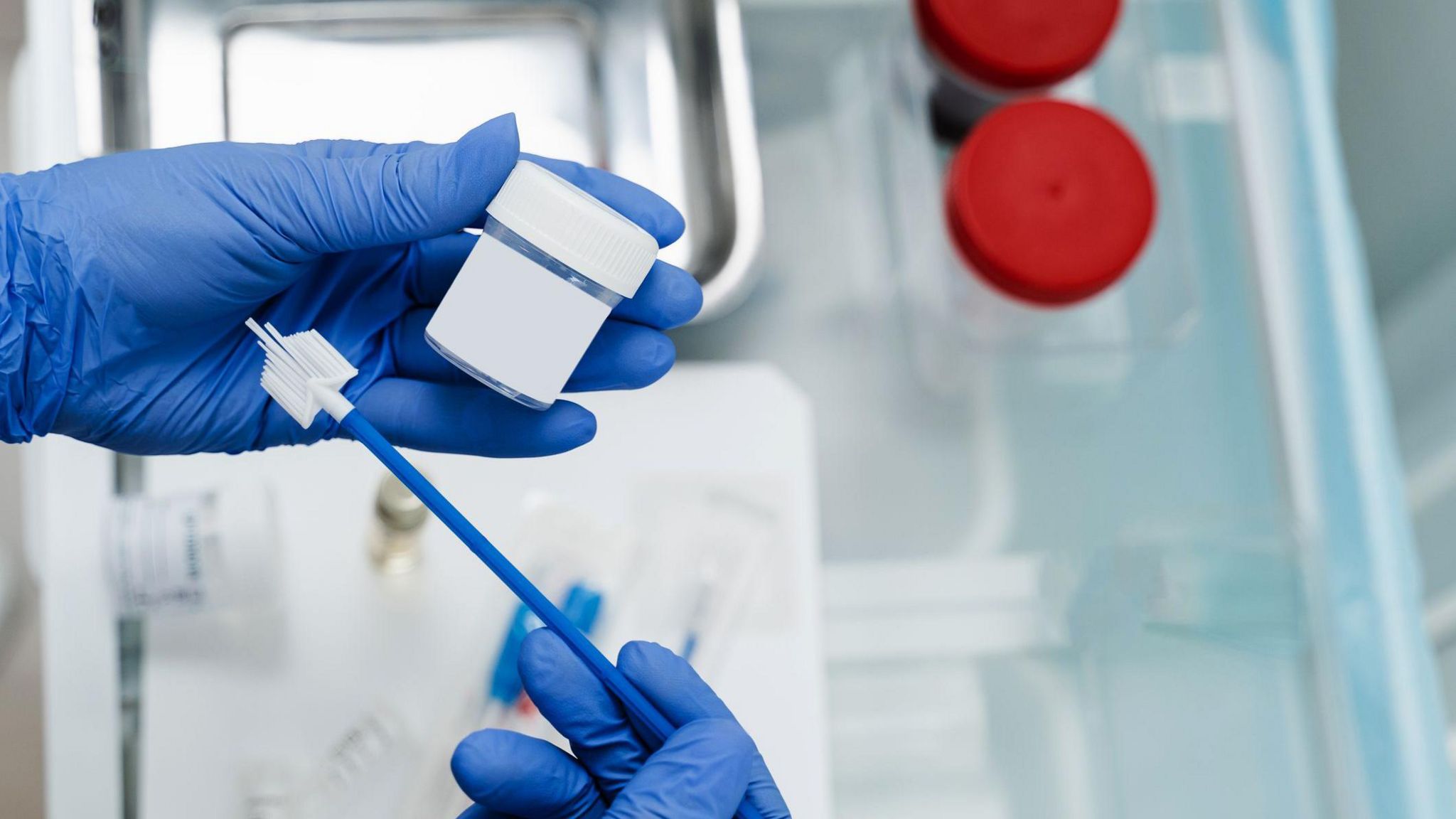
Beyond the Pap: Additional Screening Tools and Prevention Strategies
While the Pap smear remains a cornerstone of cervical cancer screening, it’s not the only tool available. Advances in medical technology and our understanding of cervical cancer have led to the development of additional screening methods and prevention strategies.
HPV Vaccination: A Proactive Approach
HPV vaccination has emerged as a powerful tool in the fight against cervical cancer. By preventing infection with high-risk HPV types, these vaccines can significantly reduce the risk of developing cervical cancer later in life.
- Recommended for both boys and girls, typically starting around age 11 or 12
- Can be given up to age 26, and in some cases, up to age 45
- Protects against the HPV types most commonly associated with cancer
Liquid-Based Cytology
This newer method of preparing cervical cell samples has several advantages over traditional Pap smears:
- Provides a cleaner sample with fewer obscuring elements
- Allows for additional tests (like HPV testing) to be performed on the same sample
- May reduce the need for repeat testing due to inadequate samples
Visual Inspection with Acetic Acid (VIA)
In resource-limited settings where advanced laboratory facilities may not be available, VIA can serve as an alternative screening method:
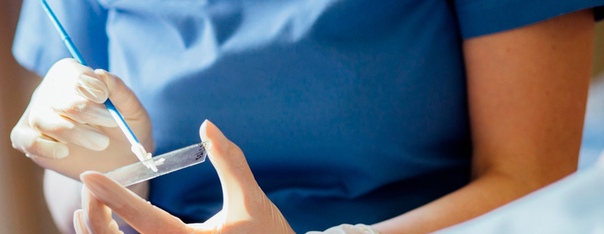
- Involves applying acetic acid (vinegar) to the cervix and visually inspecting for abnormal changes
- Provides immediate results, allowing for same-day treatment if necessary
- Cost-effective and requires minimal equipment
How do these additional methods complement Pap smears? By offering a multi-faceted approach to cervical cancer prevention and detection, these tools can help catch potential issues that might be missed by Pap smears alone, particularly in certain populations or settings.
Navigating Abnormal Results: Next Steps and Treatment Options
Receiving an abnormal Pap smear result can be anxiety-inducing, but it’s important to remember that abnormal results are relatively common and don’t necessarily indicate cancer. Understanding the potential next steps can help alleviate some of this anxiety.
Follow-Up Options
- Repeat Pap smear: In cases of mild abnormalities, your doctor may recommend repeating the test in 6-12 months to see if the changes resolve on their own.
- HPV testing: If not already performed, an HPV test can help determine if high-risk HPV types are present.
- Colposcopy: This procedure allows for a closer examination of the cervix and the option to take biopsies if necessary.
- Endocervical curettage: This procedure involves scraping cells from inside the cervical canal for further examination.
Treatment for Precancerous Changes
If precancerous changes are confirmed, several treatment options are available:
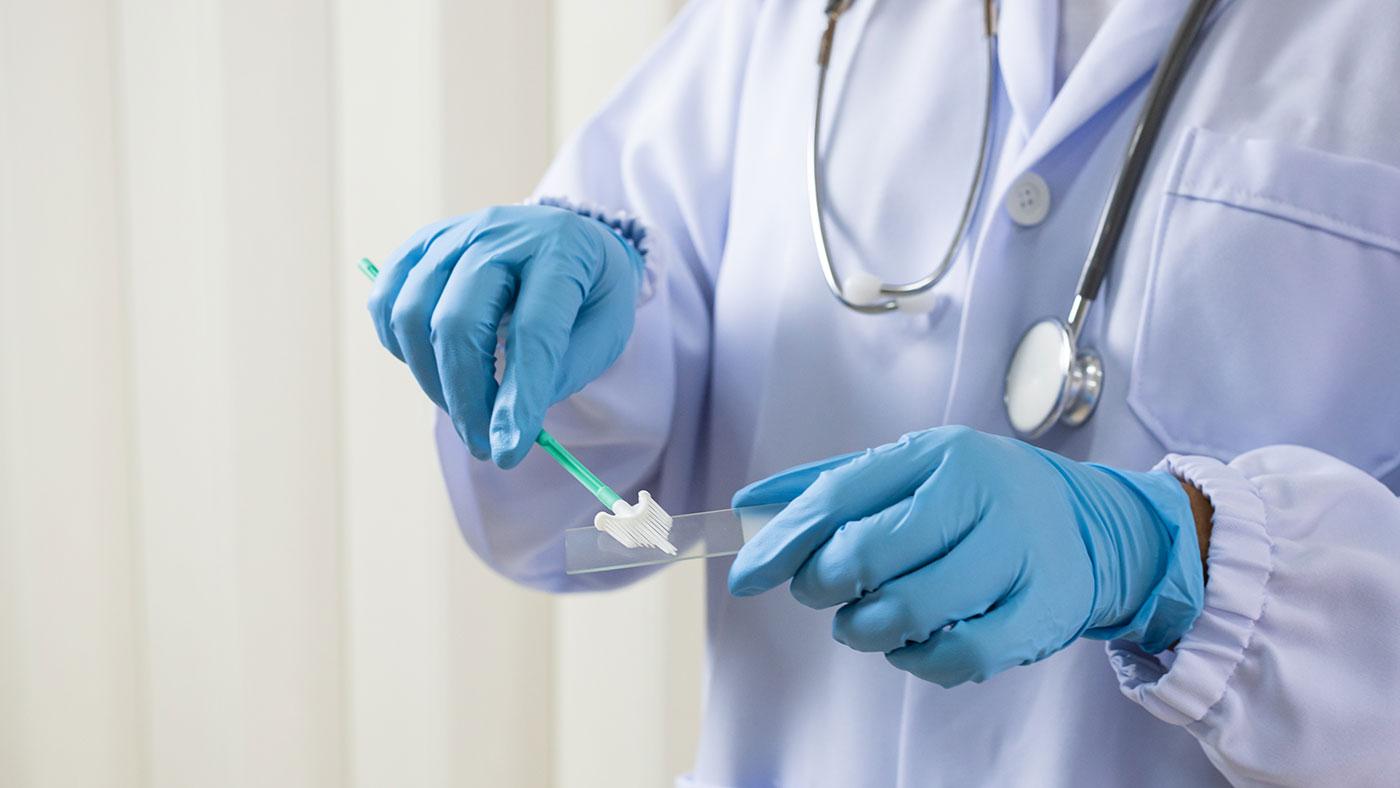
- Loop Electrosurgical Excision Procedure (LEEP): Uses a thin wire loop electrode to remove abnormal tissue
- Cryotherapy: Freezes and destroys abnormal cells
- Laser therapy: Uses a laser beam to destroy abnormal cells
- Conization: Surgically removes a cone-shaped piece of cervical tissue
How effective are these treatments? When performed by skilled healthcare providers, these procedures are highly effective at removing precancerous lesions and preventing their progression to cancer. However, follow-up screenings are crucial to ensure the abnormal cells don’t return.
Pap Smears and Special Populations: Addressing Unique Needs
While general guidelines for Pap smears apply to most women, certain populations may require special considerations when it comes to cervical cancer screening.
Pregnant Women
Can pregnant women have Pap smears? Yes, Pap smears are generally safe during pregnancy. In fact, prenatal care often includes a Pap test if the woman is due for one. However, if an abnormality is detected, follow-up procedures may be delayed until after delivery unless there’s a strong suspicion of cancer.

Post-Menopausal Women
Do post-menopausal women need Pap smears? Women who have gone through menopause should continue with regular cervical cancer screening until age 65, provided they’ve had adequate prior screening with normal results.
Women Who Have Had Hysterectomies
The need for continued Pap smears after a hysterectomy depends on several factors:
- Women who have had a total hysterectomy (removal of the uterus and cervix) for non-cancerous reasons generally don’t need continued Pap smears.
- Those who have had a partial hysterectomy (cervix remains) should continue regular screening.
- Women with a history of cervical cancer or precancerous lesions may need continued screening regardless of the type of hysterectomy.
Immunocompromised Women
Women with weakened immune systems, such as those with HIV or those undergoing chemotherapy, may need more frequent cervical cancer screening. The specific recommendations can vary based on individual circumstances and should be discussed with a healthcare provider.

The Future of Cervical Cancer Screening: Emerging Technologies and Approaches
As our understanding of cervical cancer and HPV continues to evolve, so too do the methods for detecting and preventing this disease. Several promising technologies and approaches are on the horizon, potentially revolutionizing cervical cancer screening.
HPV Primary Screening
Some countries are moving towards HPV testing as the primary screening method, with Pap smears used as a follow-up for positive HPV results. This approach may offer several advantages:
- Increased sensitivity for detecting high-grade precancerous lesions
- Potential for longer intervals between screenings for HPV-negative women
- Possibility of self-sampling, increasing access to screening
Artificial Intelligence in Cytology
Machine learning algorithms are being developed to assist in the analysis of cervical cytology samples. These AI tools could potentially:
- Improve the accuracy and consistency of Pap smear interpretations
- Reduce the workload on cytologists, allowing for more efficient screening programs
- Identify subtle patterns that might be missed by human observers
Biomarker Testing
Researchers are investigating various biomarkers that could indicate the presence of precancerous or cancerous changes in the cervix. These biomarkers might include:
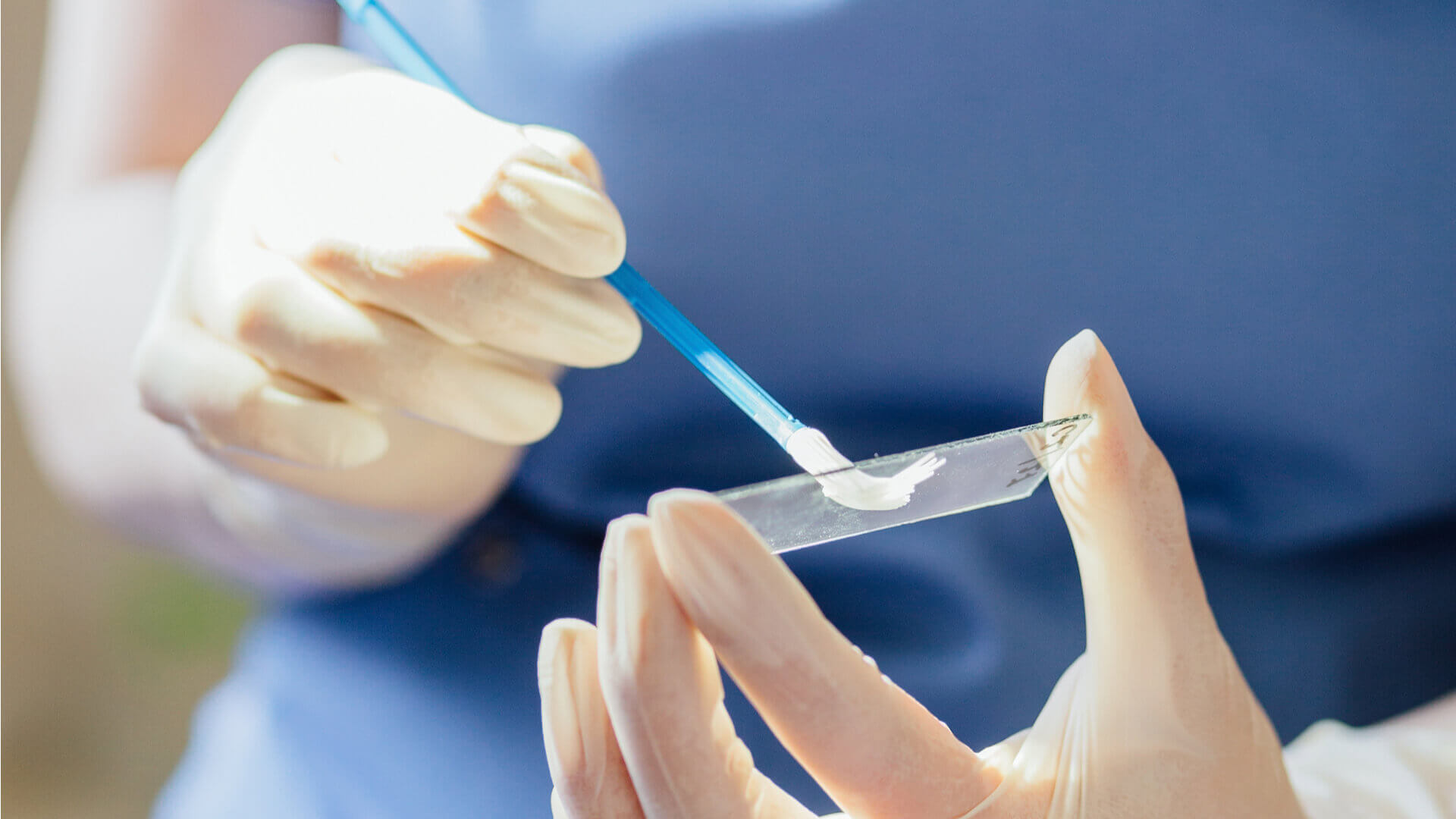
- Specific proteins or genetic markers associated with cervical cancer progression
- Epigenetic changes that occur in cervical cells during cancer development
How might these emerging technologies change cervical cancer screening? While traditional Pap smears and HPV testing remain the gold standard for now, these new approaches could lead to more personalized, accurate, and efficient screening programs in the future. As always, staying informed about the latest developments and discussing options with your healthcare provider is key to maintaining optimal cervical health.
Pap Test (Pap Smear): Purpose, Procedure, Results, Frequency
What Is a Pap Smear?
A Pap smear, also called a Pap test, is an exam a doctor uses to test for cervical cancer in women. It can also reveal changes in your cervical cells that may turn into cancer later.
Why Is a Pap Smear Done?
A pap smear is done to look for changes in cervical cells before they turn into cancer. If you have cancer, finding it early on gives you the best chance of fighting it. If you don’t, finding cell changes early can help prevent you from getting cancer.
Women ages 21-65 should have a Pap smear on a regular basis. How often you do depends on your overall health and whether or not you’ve had an abnormal Pap smear in the past.
How Often Should I Have a Pap Smear?
You should have the test every 3 years from ages 21 to 65. You may choose to combine your Pap testing with being tested for the human papillomavirus (HPV) starting at age 30. If you do so, then you can be tested every 5 years instead.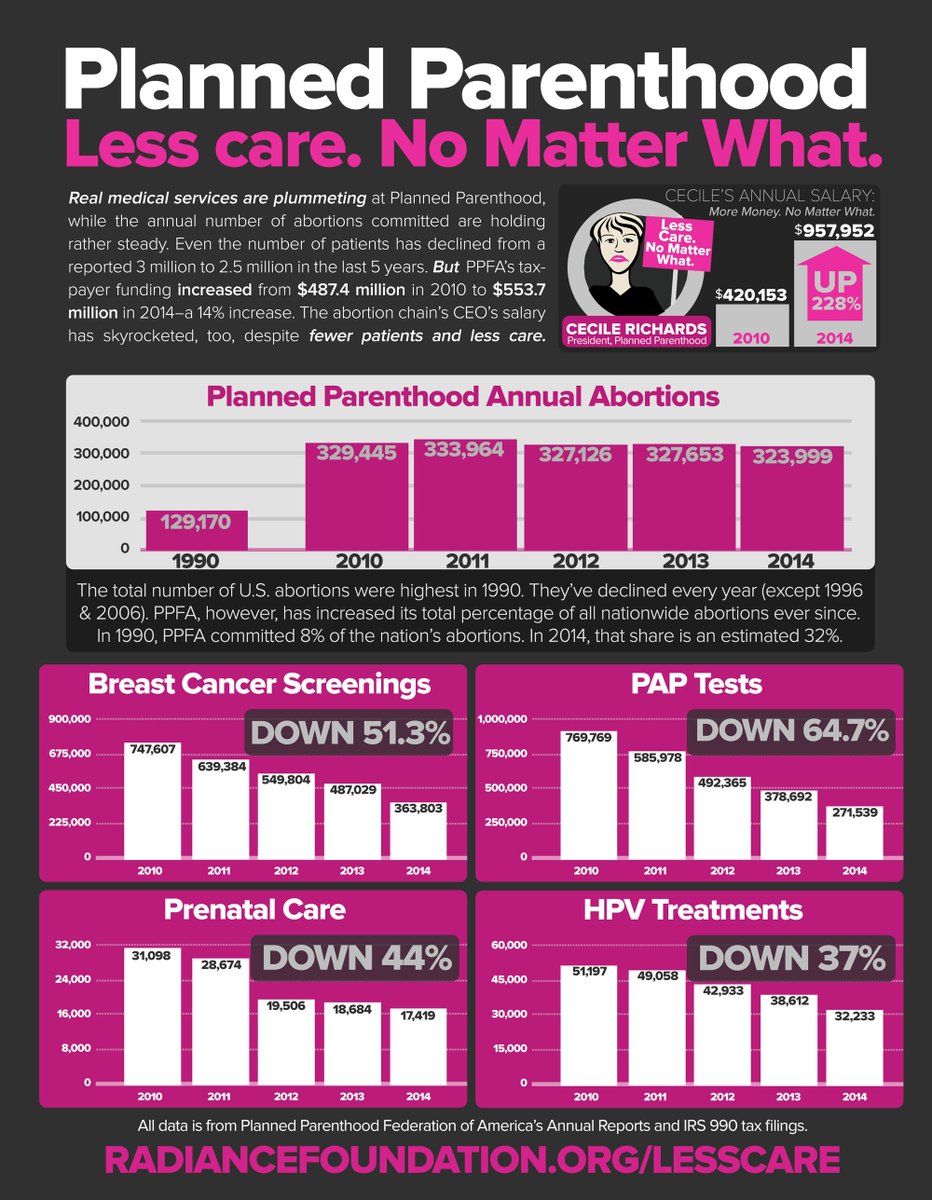 HPV is the most common sexually transmitted infection (STI), and it’s linked to cervical cancer.
HPV is the most common sexually transmitted infection (STI), and it’s linked to cervical cancer.
If you have certain health concerns, your doctor may recommend you have a Pap more often. Some of these include:
- Cervical cancer or a Pap test that revealed precancerous cells
- HIV infection
- A weakened immune system due to an organ transplant, chemotherapy, or chronic corticosteroid use
- Having been exposed to diethylstilbestrol (DES) before birth
Talk to your doctor if you have questions or concerns. They’ll let you know for sure.
Pap Smear Preparation
You shouldn’t have a Pap smear during your period. Heavy bleeding can affect the accuracy of the test. If your test ends up being scheduled for that time of month, ask your doctor if you can reschedule.
For the most accurate Pap smear, doctors recommend taking the following steps, starting 48 hours before your test.
- Don’t have sex or use lubricants.

- Don’t use sprays or powders near the vagina.
- Don’t insert anything into the vagina, including tampons, medications, creams, and suppositories.
- Don’t rinse the vagina with water, vinegar, or other fluid (douche).
Pap Smear Procedure
The test is done in your doctor’s office or clinic. It takes about 10 to 20 minutes.
You’ll lie on a table with your feet placed firmly in stirrups. You’ll spread your legs, and your doctor will insert a metal or plastic tool (speculum) into your vagina. They’ll open it so that it widens the vaginal walls. This allows them to see your cervix. Your doctor will use a swab to take a sample of cells from your cervix. They’ll place them into a liquid substance in a small jar, and send them to a lab for review.
The Pap test doesn’t hurt, but you may feel a little pinch or a bit of pressure.
Pap Smear Results
Your doctor will get them within a few days. They’ll come back either negative (normal) or positive (abnormal).
Normal result
A negative result is a good thing. That means your doctor didn’t find any precancerous or cancerous cells on your cervix. You won’t need another Pap until you’re due for your next scheduled one.
Abnormal result
If your results come back positive, it doesn’t mean you have cancer.
There are several reasons you could have an abnormal Pap smear.
- Mild inflammation or minor cell changes (dysplasia)
- HPV or other infection
- Cancer or pre-cancer
- Lab test error
Inflammation can happen if you’ve had sex or used a diaphragm shortly before having a Pap smear.
If you have inflammation or minor cell changes, your doctor may take a “wait and see” approach. They may suggest you have another Pap test in a few months. If the abnormal cells haven’t cleared up by then, your doctor may order more tests. These might include a procedure called a colposcopy.
During a colposcopy, your doctor will insert a speculum into your vagina, just as they did for the Pap test.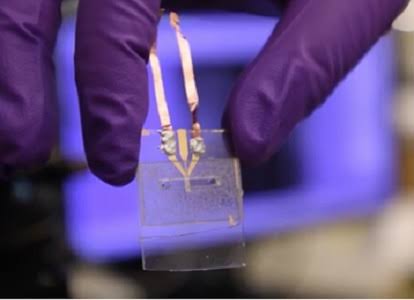 This time, they’ll look at the cervix with a colposcope. That’s a tool that has a lens and a bright light that allow your doctor to get a better look at your cervix. Your doctor will swab your cervix with vinegar or some other liquid solution. It’ll highlight any suspicious-looking areas. Your doctor will be able to see them through the lens on the colposcope.
This time, they’ll look at the cervix with a colposcope. That’s a tool that has a lens and a bright light that allow your doctor to get a better look at your cervix. Your doctor will swab your cervix with vinegar or some other liquid solution. It’ll highlight any suspicious-looking areas. Your doctor will be able to see them through the lens on the colposcope.
If they find areas that don’t look right, they’ll take a sample (biopsy). They’ll send the sample to a lab for further testing. They may swab your cervix with a chemical solution to limit bleeding.
Pap Smear Risks
A Pap smear is considered a safe procedure. But it’s possible that the test may miss some abnormal cells or cervical cancers (false negative). Talk to your doctor about the benefits and risks of cervical cancer screening.
Pap Smear (Pap Test) | Lab Tests Online
These resources provide additional information about cervical cancer and screening tests:
Sources
A. D.A.M. Medical Encyclopedia. Vaginal or uterine bleeding. Updated September 25, 2018. Accessed April 21, 2021. https://medlineplus.gov/ency/article/007496.htm
D.A.M. Medical Encyclopedia. Vaginal or uterine bleeding. Updated September 25, 2018. Accessed April 21, 2021. https://medlineplus.gov/ency/article/007496.htm
A.D.A.M. Medical Encyclopedia. Cervicitis. Updated January 1, 2020. Accessed April 21, 2021. https://medlineplus.gov/ency/article/001495.htm
A.D.A.M. Medical Encyclopedia. Pap test. Updated January 1, 2020. Accessed April 21, 2021. https://medlineplus.gov/ency/article/003911.htm
Barad DH. Tests for Gynecologic Disorders. Merck Manual Consumer Edition. Updated March 2021. Accessed April 21, 2021. https://www.merckmanuals.com/home/women-s-health-issues/diagnosis-of-gynecologic-disorders/tests-for-gynecologic-disorders
Centers for Disease Control and Prevention. What Should I Know About Screening? Updated January 12, 2021. Accessed April 21, 2021. https://www.cdc.gov/cancer/cervical/basic_info/screening.htm
Crum CP, Huh WK, Einstein MH. Cervical cancer screening: The cytology and human papillomavirus report. In: Goff B, ed. UpToDate. Updated April 7, 2021. Accessed April 21, 2021. https://www.uptodate.com/contents/cervical-cancer-screening-the-cytology-and-human-papillomavirus-report
In: Goff B, ed. UpToDate. Updated April 7, 2021. Accessed April 21, 2021. https://www.uptodate.com/contents/cervical-cancer-screening-the-cytology-and-human-papillomavirus-report
Feldman S, Crum CP. Cervical cancer screening tests: Techniques for cervical cytology and human papillomavirus testing. In: Goff B, ed. UpToDate. Updated October 16, 2020. Accessed April 21, 2021. https://www.uptodate.com/contents/cervical-cancer-screening-tests-techniques-for-cervical-cytology-and-human-papillomavirus-testing
Feldman S, Goodman A, Peipert JF. Screening for cervical cancer in resource-rich settings. In: Goff B, Elmore JG, eds. UpToDate. Updated February 23, 2021. Accessed April 21, 2021. https://www.uptodate.com/contents/screening-for-cervical-cancer-in-resource-rich-settings
Goodman A, Huh WK, Einstein MH. Cervical cancer screening: Management of results. In: Goff B, ed. UpToDate. Updated April 7, 2021. Accessed April 21, 2021. https://www.uptodate.com/contents/cervical-cancer-screening-management-of-results
MedlinePlus: National Library of Medicine. Pap smear. Updated July 31, 2020. Accessed April 21, 2021. https://medlineplus.gov/lab-tests/pap-smear/
Pap smear. Updated July 31, 2020. Accessed April 21, 2021. https://medlineplus.gov/lab-tests/pap-smear/
MedlinePlus: National Library of Medicine. Cervical cancer screening. Updated January 22, 2021. Accessed April 21, 2021. https://medlineplus.gov/cervicalcancerscreening.html
National Cancer Institute. Glandular cell of the cervix. Date unknown. Accessed April 21, 2021. https://www.cancer.gov/publications/dictionaries/cancer-terms/def/glandular-cell-of-the-cervix
National Cancer Institute. HPV/pap cotest. Date unknown. Accessed April 21, 2021. https://www.cancer.gov/publications/dictionaries/cancer-terms/def/hpv-pap-cotest
National Cancer Institute. HPV and Pap testing. Updated December 20, 2019. Accessed April 21, 2021. https://www.cancer.gov/types/cervical/pap-hpv-testing-fact-sheet
National Cancer Institute. HSIL. Date unknown. Accessed April 21, 2021. https://www.cancer.gov/publications/dictionaries/cancer-terms/def/hsil
National Cancer Institute.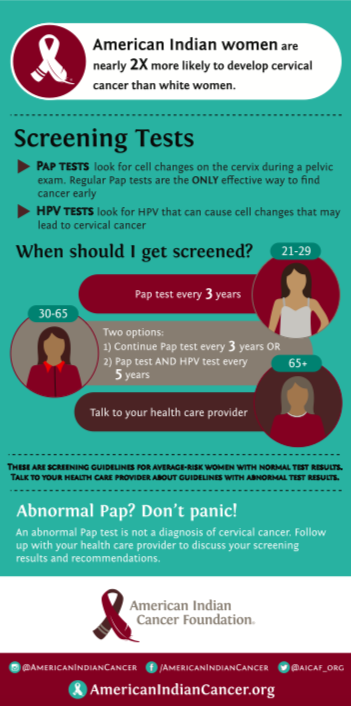 Pap test. Date unknown. Accessed April 21, 2021. https://www.cancer.gov/publications/dictionaries/cancer-terms/def/pap-test
Pap test. Date unknown. Accessed April 21, 2021. https://www.cancer.gov/publications/dictionaries/cancer-terms/def/pap-test
National Cancer Institute. Atypical squamous cells of undetermined significance. Date unknown. Accessed April 21, 2021. https://www.cancer.gov/publications/dictionaries/cancer-terms/def/atypical-squamous-cells-of-undetermined-significance
National Cancer Institute. Understanding cervical changes: A health guide for women. Published May 2017. Accessed April 21, 2021. https://www.cancer.gov/types/cervical/understanding-abnormal-hpv-and-pap-test-results/understanding-cervical-changes.pdf
US Department of Health and Human Services. Pap and HPV tests. Updated January 31, 2019. Accessed April 21, 2021. https://www.womenshealth.gov/a-z-topics/pap-hpv-tests
US Food and Drug Administration. Improving your odds for cervical health. Updated January 26, 2017. Accessed April 21, 2021. https://www.fda.gov/consumers/consumer-updates/improving-your-odds-cervical-health
US Preventive Services Task Force. Cervical cancer: Screening. Published August 21, 2018. Accessed April 21, 2021. https://www.uspreventiveservicestaskforce.org/uspstf/recommendation/cervical-cancer-screening
Cervical cancer: Screening. Published August 21, 2018. Accessed April 21, 2021. https://www.uspreventiveservicestaskforce.org/uspstf/recommendation/cervical-cancer-screening
How a Pap Test Can Save Your Life: OB/GYN Specialists: OB/GYNs
Because January is National Cervical Cancer Awareness Month, our team at OB/GYN Specialists reminds you about the importance of a routine Pap test. This simple, noninvasive screening is your first line of defense against cervical cancer and other reproductive health issues.
Basics of a Pap test
A Pap test is a preventive screening used to identify the earliest stages of cervical cancer. The test can also determine if there are abnormal cells developing in your cervix, which can increase your risk for cancer in the future.
Generally, a Pap test is recommended for women beginning at the age of 21 and should be repeated every one to three years. If you have a history or a family history of cancer, you may need testing more often.
Pap tests are done during a routine pelvic exam. Your doctor collects a sample of your cervical cells. This collection process is easy, requiring only a quick swabbing of your cervical area. Once the cells are collected, your doctor sends them to a medical laboratory for further analysis.
The outcome of a Pap test
The results of a Pap test are classified as either normal or abnormal. Normal test results indicate there are no changes in cervical cells and no sign of cancer.
If your results are abnormal, it doesn’t automatically indicate you have cancer. There are a number of reasons your Pap results can be abnormal, and your doctor may recommend another Pap test before recommending the next step.
Possible reasons for abnormal Pap test results besides cancer include:
- Vaginal infection
- Recent sexual activity
- Urinary tract infection (UTI)
- Recent use of tampons or douche
Abnormal Pap test results may also detect the presence of human papillomavirus (HPV), a sexually transmitted disease that can cause genital warts and increase your risk for cancer.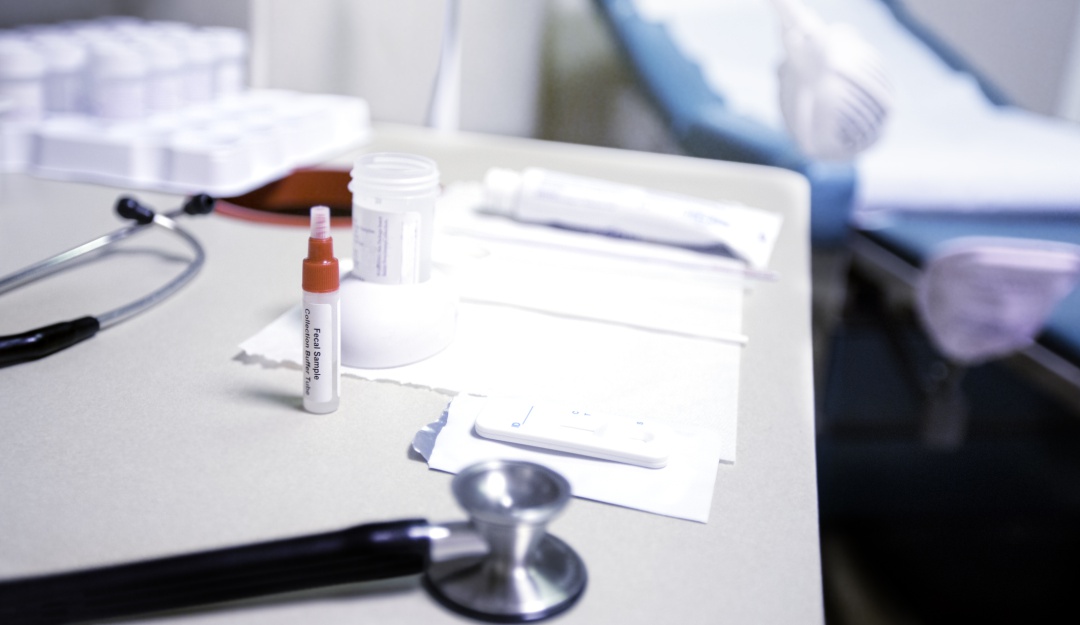
In some cases, your Pap test results may come back abnormal for no reason at all.
Early cancer detection
If your abnormal Pap test results do indicate the presence of precancerous or cancerous cells, your doctor may administer another Pap test to confirm the results. They may also perform an HPV test to confirm or rule out the presence of an infection.
If there’s a concern for cancer, you likely will undergo a colposcopy procedure, where a special microscope is inserted into your vaginal canal to closely evaluate your cervix. During this test, your doctor may perform a biopsy.
This type of biopsy is known as a cone biopsy, where a small, cone-shaped portion of cervical tissue is removed for evaluation. The specific shape of tissue ensures your doctor removes a good sample of cells in an area where abnormal cells typically form.
If cancerous cells are present, they can be effectively destroyed through a freezing process or through a loop electrosurgical excision procedure (LEEP). This procedure uses a specialized heated wire instrument that removes affected cervical tissue.
This procedure uses a specialized heated wire instrument that removes affected cervical tissue.
In many cases, a LEEP procedure can remove all abnormal cells. If your biopsy confirms cancer, your OB/GYN Specialists doctor works closely with you to determine the best course of treatment.
Why early detection matters so much
Because the efficiency of a Pap test can help your doctor identify and remove abnormal cells quickly, it goes without saying that this simple preventive screening can save your life. Otherwise, abnormal and cancerous cells can take months or years to show symptoms — often when it’s too late for treatment to be effective. For this reason, routine Pap tests are a must for all women.
Schedule your Pap test today and learn more about the right testing schedule for you by calling OB/GYN Specialists or using the online booking feature.
Abnormal Pap Test | Michigan Medicine
Topic Overview
What is an abnormal Pap test?
When your doctor says that your Pap test, or Pap smear, was abnormal, it means that the test found some cells on your cervix that do not look normal.
A Pap test may be done as part of a woman’s routine physical exam, because it’s the best way to prevent cervical cancer. But having an abnormal test result doesn’t mean you have cancer. In fact, the chances that you have cancer are very small.
What causes an abnormal Pap test?
Most of the time, the abnormal cell changes are caused by certain types of human papillomavirus, or HPV. HPV is a sexually transmitted infection.
Usually these cell changes go away on their own. But certain types of HPV have been linked to cervical cancer. That’s why regular Pap tests are so important.
Sometimes the changed cells are due to other types of infection, such as those caused by bacteria or yeast. These infections can be treated.
In women who have been through menopause, a Pap test may find cell changes that are just the result of getting older.
What increases your risk for an abnormal Pap test?
Certain sexual behaviors, like having sex without condoms and having more than one sex partner (or having a sex partner who has other partners), can increase your risk for getting HPV.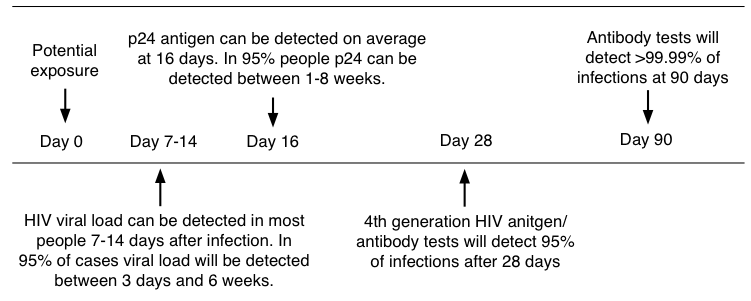 And HPV raises your risk for having an abnormal pap test.
And HPV raises your risk for having an abnormal pap test.
HPV can stay in your body for many years without your knowing it. So even if you now have just one partner and practice safer sex, you could still have an abnormal Pap test if you were exposed to HPV in the past.
Smoking or having an impaired immune system also raises your chances of having cell changes in your cervix.
Do abnormal cell changes cause symptoms?
The cell changes themselves don’t cause symptoms. HPV, which causes most abnormal Pap tests, usually doesn’t cause symptoms either.
If a different sexually transmitted infection is the cause of your abnormal test, you may have symptoms such as:
- A discharge from the vagina that isn’t normal for you, such as a change in the amount, color, odor, or texture.
- Pain, burning, or itching in your pelvic or genital area when you urinate or have sex.
- Sores, lumps, blisters, rashes, or warts on or around your genitals.

What will you need to do if you have an abnormal Pap test?
You may need more tests to find out if you have an infection or to find out how severe the cell changes are. For example, you may need:
- Colposcopy, a test to look at the vagina and cervix through a lighted magnifying tool.
- An HPV test. Like a Pap test, an HPV test is done on a sample of cells taken from the cervix.
- Another Pap test in about 6 to 12 months.
A colposcopy is usually done before any treatment is given. During a colposcopy, the doctor also takes a small sample of tissue from the cervix so that it can be looked at under a microscope. This is called a biopsy.
Treatment, if any, will depend on whether your abnormal cell changes are mild, moderate, or severe. In moderate to severe cases, you may have treatment to destroy or remove the abnormal cells.
Cause
Most abnormal Pap tests are caused by HPV infections.
Other types of infection—such as those caused by bacteria, yeast, or protozoa (Trichomonas)—sometimes lead to minor changes on a Pap test called atypical squamous cells.
Natural cell changes that may happen during and after menopause can also cause an abnormal Pap test.
What increases your risk of having an abnormal test result?
Certain sexual behaviors—such as having sex without condoms and having more than one sex partner—increase your risk of getting an HPV infection. And an HPV infection raises your risk for having abnormal test results.
Other things that may also play a role in increasing your risk include:
- Smoking.
- Having an impaired immune system.
- Having been exposed to the drug DES while your mother was pregnant with you, though this is rare.
If you have had one abnormal Pap test result, you’re more likely to have another in the future.
Types of Results
Lab specialists label abnormal cells according to how abnormal they are—how different they are from normal cells. Knowing what type of abnormal cells you have helps your doctor decide on treatment.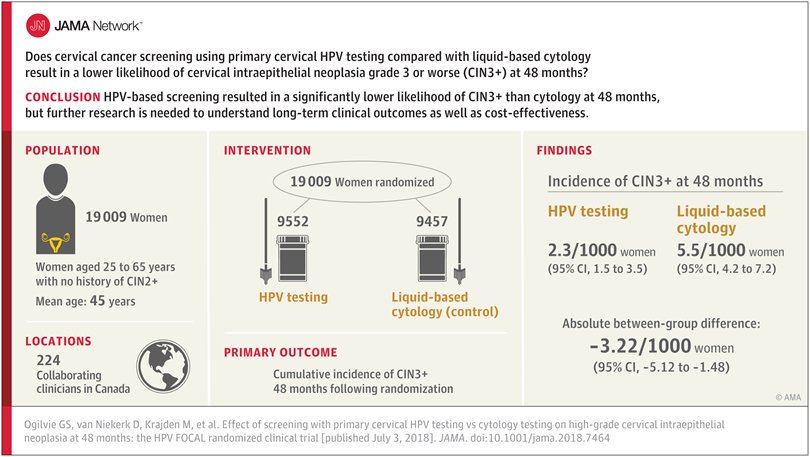
Minor cell changes
Minor cell changes may disappear without treatment. But sometimes they turn into more serious cell changes. Types of minor cell changes are:
- ASC-US or ASC-H. These are changes for which the cause is unknown. ASC-US changes usually stay the same or return to normal. ASC-H changes are also minor but have a higher likelihood of becoming more serious.
- LSIL. These changes may be more likely to become more severe over time, but even when they do, they usually return to normal.
Moderate to severe cell changes
Moderate to severe cell changes
—HSIL and AGC—are more likely to be precancerous and turn into cervical cancer if left untreated.
In some countries, other labeling systems are used. These systems may use the term dysplasia to describe cervical cell changes. Or they may simply describe the changes as mild, moderate, or severe.
Follow-Up Tests
When your Pap test result is abnormal, you always need to follow up with your doctor.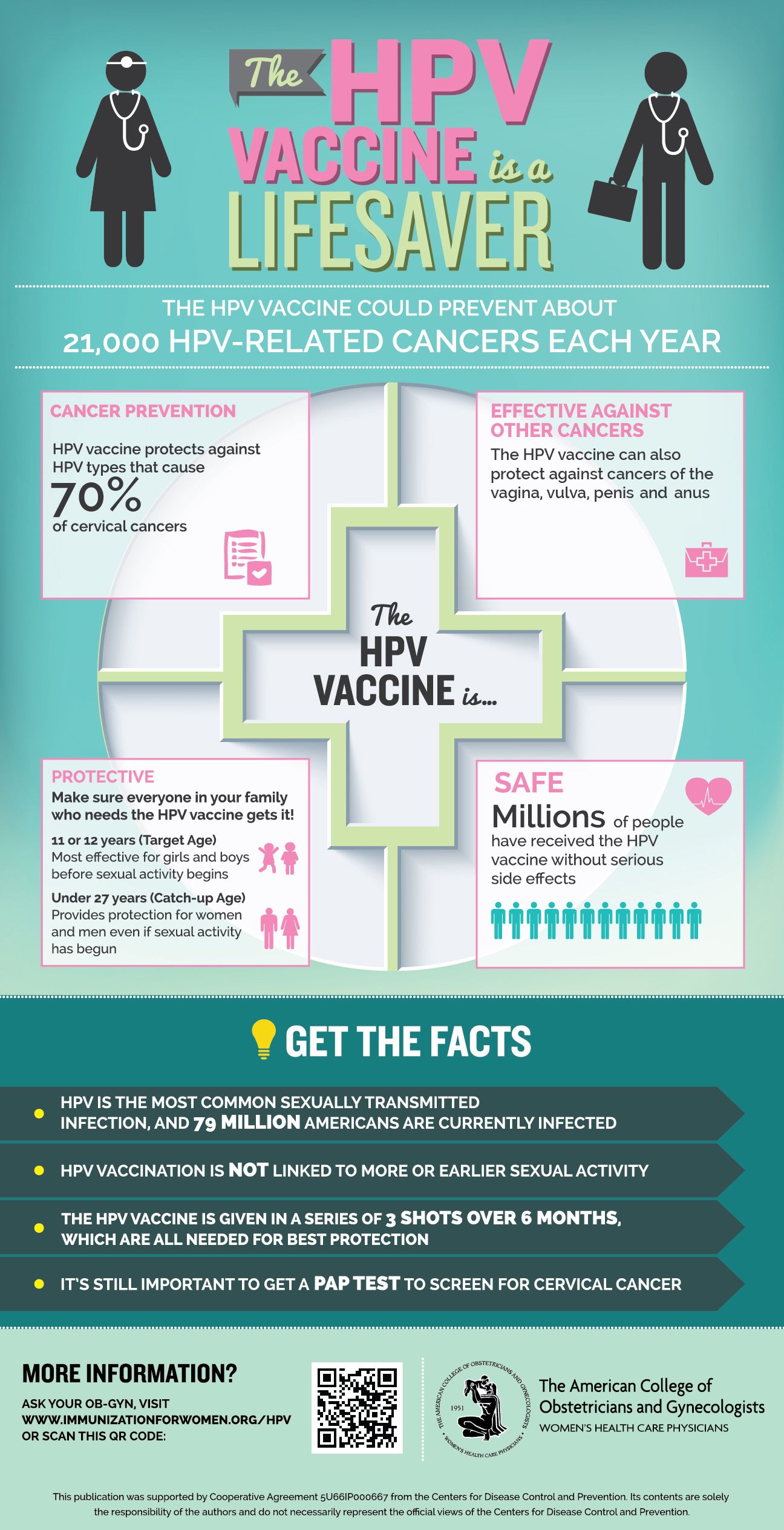 Often this just means having regular checkups and Pap tests. But sometimes it means more tests or treatment.
Often this just means having regular checkups and Pap tests. But sometimes it means more tests or treatment.
It’s very important to complete any further testing that your doctor recommends.
Watchful waiting
Most women won’t need special testing or treatment. Instead, they’ll follow a schedule of regular Pap tests to watch for cell changes. This is called watchful waiting. It may be recommended when:
- You have a treatable infection in the vagina or cervix.
- You have an HPV infection. Most low-risk types of HPV go away on their own within 6 to 18 months.
- Your cell changes are minor.
It’s okay to do nothing but watch and wait, because minor cell changes such as ASC-US or LSIL don’t usually become more severe during a short period of watchful waiting.
Watchful waiting may not be a good choice if you don’t think you’ll be able to follow your doctor’s recommendations about having regular Pap tests. Talk with your doctor about your testing choices.
Talk with your doctor about your testing choices.
More testing
After an abnormal Pap test, you may need more tests to look for infection or to find out more about your cell changes. These tests include:
HPV test
. This test looks for high-risk types of HPV (human papillomavirus). Knowing whether you have a high-risk type of HPV can help guide your treatment decisions.
Colposcopy
. In this test, your doctor uses a magnifying instrument to look at your vagina and cervix. The doctor takes a small sample of tissue so that it can be examined under a microscope.
Cone biopsy
. A cone biopsy removes a little more tissue than a cervical biopsy. It may also serve as treatment by removing the abnormal cells.
- Tests for other infections, such as other sexually transmitted infections, a yeast infection, or a bacterial infection.

Tests and Treatments
The type of treatment you have will depend on what caused the abnormal test results.
Infection: If your abnormal test results were caused by a vaginal infection or a sexually transmitted infection, you can be treated with medicine.
Menopause: Women near menopause may have abnormal results because of normal body changes during menopause. These minor cell changes may improve with the use of estrogen cream.
Moderate or severe cell changes, such as HSIL. Your treatment will focus on destroying or removing the abnormal tissue. Treatment choices include:
For cervical cancer, treatment will focus on destroying or removing the cancer. To learn more, see the topic Cervical Cancer.
A pregnant woman with an abnormal Pap test is monitored closely throughout her pregnancy. Monitoring may include a colposcopy. The goal is to rule out cervical cancer, a rare diagnosis.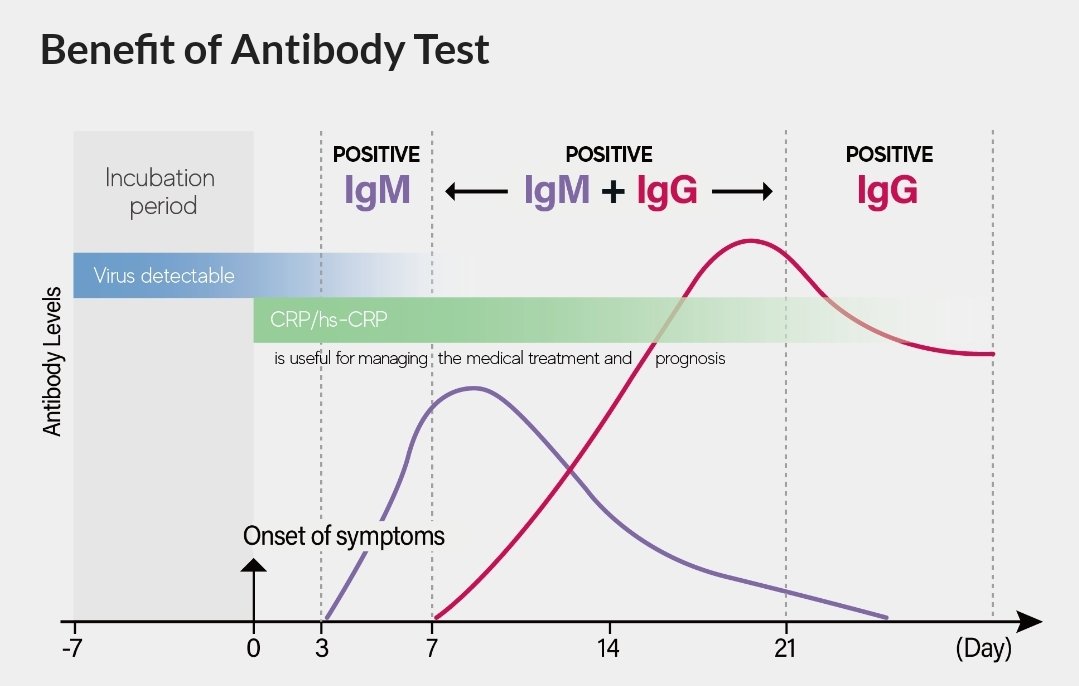 If cancer is ruled out, treatment for abnormal cell changes is done after delivery.
If cancer is ruled out, treatment for abnormal cell changes is done after delivery.
Credits
Current as of:
December 17, 2020
Author: Healthwise Staff
Medical Review:
Sarah Marshall MD – Family Medicine
Martin J. Gabica MD – Family Medicine
Kathleen Romito MD – Family Medicine
Kevin C. Kiley MD – Obstetrics and Gynecology
Current as of: December 17, 2020
Author:
Healthwise Staff
Medical Review:Sarah Marshall MD – Family Medicine & Martin J. Gabica MD – Family Medicine & Kathleen Romito MD – Family Medicine & Kevin C. Kiley MD – Obstetrics and Gynecology
Pap tests and cervical cancer
A Pap test is an examination of cells that are scraped or brushed off the cervix, and placed on a slide that can be looked at under a microscope.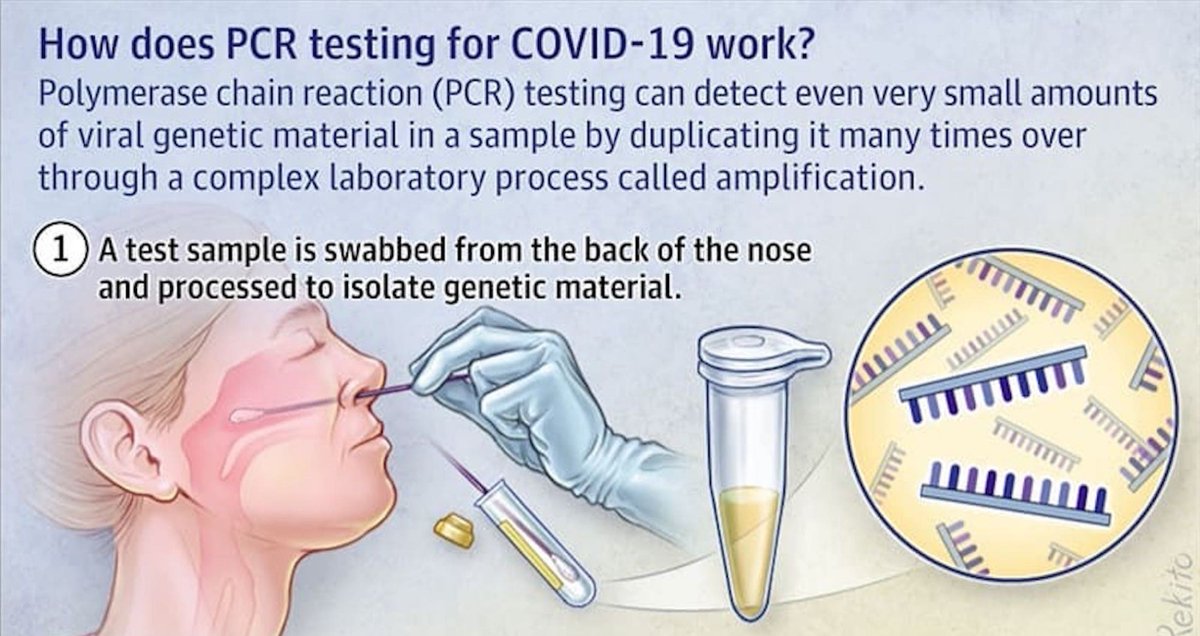 The purpose of the Pap test is to find changes that may lead to cervical cancer.
The purpose of the Pap test is to find changes that may lead to cervical cancer.
Cancer of the cervix is an abnormal growth of the cells lining the surface of the cervix. The cervix is the lower, narrow end of the uterus (womb). It opens into the vagina. It connects the womb with the vagina.
Women who had sex at an early age, had many sexual partners, or more than three pregnancies have a greater risk of cervical cancer. Smokers and young women whose mothers took DES while pregnant are also at risk. Cervical cancer can occur at any age. The peak for early cancer is between ages 30 and 40. The peak for invasive cancer is ages 40-50.
Early cancers often cause no symptoms. Some women with early cervical cancer will have unusual bleeding or discharge, however. Late symptoms include pelvic pain, back pain and leg swelling.
- Do not douche for at least three days before your Pap test.
 If you do, there won’t be enough loose cells in your cervical fluid for an accurate test.
If you do, there won’t be enough loose cells in your cervical fluid for an accurate test. - Do not use tampons, or use vaginal medications or contraceptives for 72 hours before your appointment.
- Schedule your exam two weeks after the first day of your last period. Do not schedule it during your menstrual period.
The Pap test is helpful in detecting cervical cancer. It is less accurate for finding cancer of the body of the uterus. It also does not usually find cancer of the fallopian tubes, or the ovaries. Any woman with cells suspicious for cancer on a Pap smear, should be carefully evaluated to determine the origin of the abnormal cells, which could include the vagina, cervix, uterus, fallopian tubes or ovaries.
The cells covering the cervix go through mild to severe changes before becoming cancer. These changes are called dysplasia.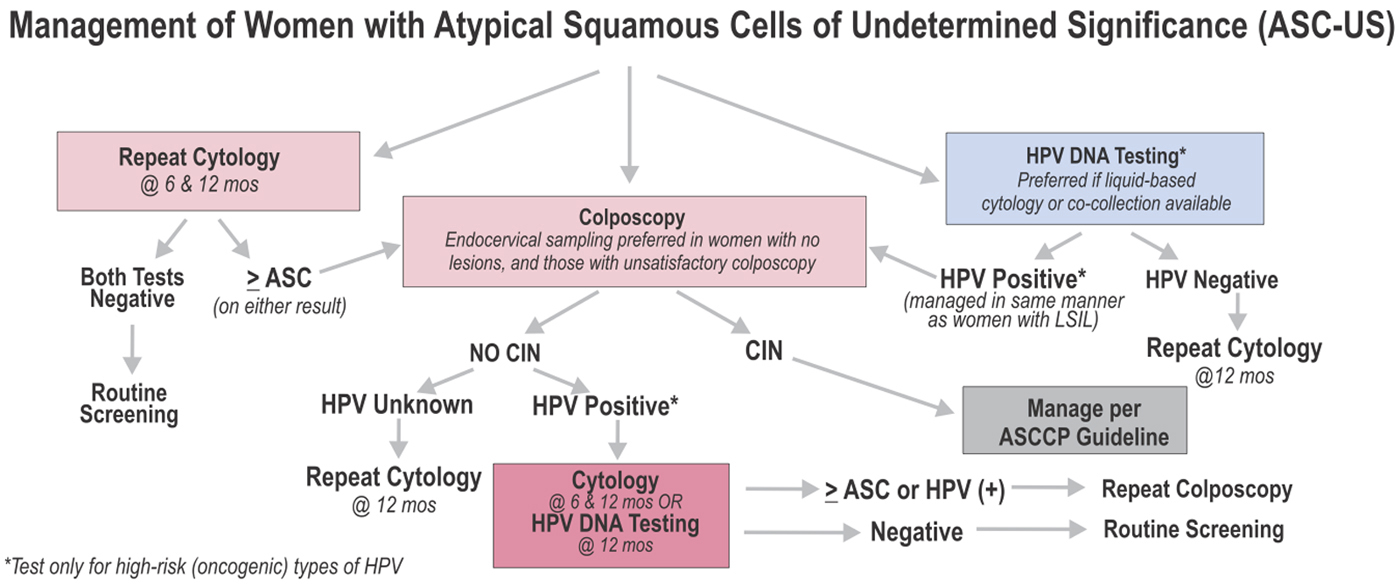 Dysplasia does not always lead to cancer. It should be followed up and treated to avoid developing cancer. It most often occurs in women between the ages of 25 and 35. But it may also develop in women in their teens or early 20s. Exposure to the human papilloma virus during sexual relations is the cause of cervical dysplasia and cancer.
Dysplasia does not always lead to cancer. It should be followed up and treated to avoid developing cancer. It most often occurs in women between the ages of 25 and 35. But it may also develop in women in their teens or early 20s. Exposure to the human papilloma virus during sexual relations is the cause of cervical dysplasia and cancer.
A biopsy may be needed in order to get a diagnosis of dysplasia or cancer. Your doctor may also perform a colposcopy. During this exam, the doctor views the cervix with a colposcope. This gives a magnified view of the cervix. It shows greater detail than can be seen with normal vision. Biopsies can also be done during this exam.
Before treatment is started, the doctor will usually perform a chest x-ray and some blood tests. Other tests such as CT scans to check for cancer in the liver, kidneys or lymph nodes may also be advised.
Cervical dysplasia can be treated with freezing, destroying with a laser, removal using a wire loop (LEEP), or by use of a scalpel. The type of treatment for cervical cancer depends on a number of factors. The doctor will explain what these are. Invasive cervical cancer will be treated with surgery and/or radiation therapy. Some patients may require chemotherapy.
There is a vaccine for certain types of HPV to prevent cervical dysplasia and cervical cancer. Talk to your doctor to see if you should receive this vaccine.
Understanding your Pap test or cervical screening test results
The Pap test (sometimes called the Pap smear) has changed to the cervical screening test.
Cervical cancer incidence and mortality rates have halved in Australia since the introduction of the National Cervical Screening Program in 1991. This program offered a free Pap test every two years to women between the ages of 18 and 70.
A number of changes came into effect as of 1 December 2017. These changes recognise the introduction of a vaccine against specific strains of the human papillomavirus (HPV), which causes almost all cases of cervical cancer. HPV is a very common sexually transmitted infection which usually shows no symptoms and goes away by itself. Persistent HPV infection can cause abnormal cells to develop on the cervix. Over a long time, these abnormal cells may develop into cervical cancer if left untreated.
The new screening program is designed to work together with the HPV vaccination program to help reduce the incidence of cervical cancer.
The new cervical screening test procedure is similar to a Pap smear test. For both tests a doctor or nurse takes a sample of cells from the cervix. However, the Pap smear test used to look for abnormal cells in the cervix, while the cervical screening test looks for HPV infection. The new test for HPV can identify women who could be at risk of cervical cancer earlier than the Pap test could.
Women aged 25 to 74 years of age should have a cervical screening test two years after their last Pap test. Subsequently, you will only need to have the test every five years if your results are normal.
The reason the age has changed from 18 to 25 for your first screening is that most women under the age of 25 will have been vaccinated for HPV. In addition, cervical cancer in women under 25 is rare.
Having a test for HPV every five years offers the best chance of preventing cervical cancer. It is a quick and simple test used to check for HPV infection.
✕
New cervical program: info for women over 25 | Cancer Council Australia
Why have a cervical screening test?
The new cervical screening test is more accurate than the Pap smear test and the best test available for the prevention of most cases of cervical cancer.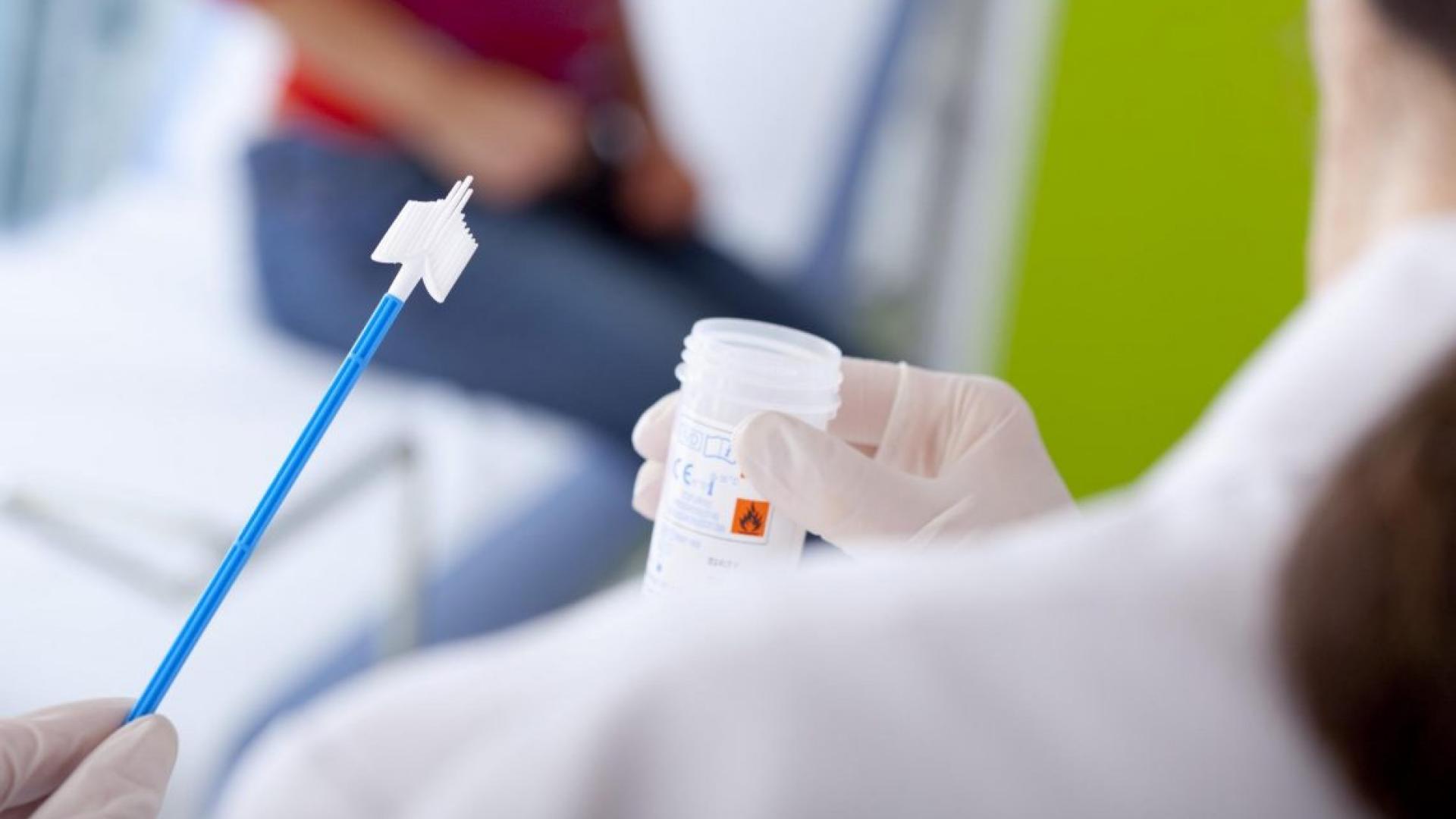 Australia is set to become the first country in the world to eliminate cervical cancer as a public health issue. That is why it is so important for all women between the ages of 25 and 74 to have a HPV test every five years.
Australia is set to become the first country in the world to eliminate cervical cancer as a public health issue. That is why it is so important for all women between the ages of 25 and 74 to have a HPV test every five years.
To learn more watch the video:
✕
Eliminating Cervical Cancer – A Call to Action:UN HLM on NCDs | Cancer Council Australia
What about the vaccine for cervical cancer?
Cervical cancer mostly occurs as a consequence of a human papillomavirus (HPV) infection. There are more than 200 different types of HPV, but only a few types that affect the cervix.
Vaccines are now available that prevent the types of HPV infection that cause most cervical cancers but do not protect against all the types of HPV that can cause cervical cancers.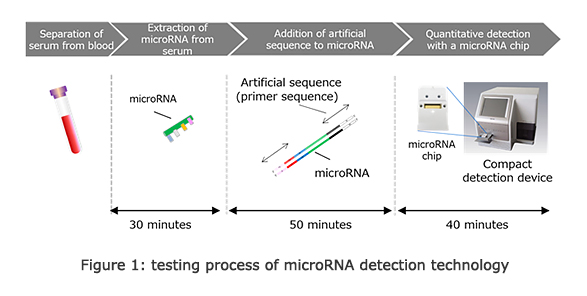 All vaccinated and unvaccinated women still need to have a cervical screening test every five years.
All vaccinated and unvaccinated women still need to have a cervical screening test every five years.
What is an unsatisfactory cervical screening test?
An unsatisfactory cervical screening test means that the laboratory staff could not detect any cells to give a report.
In this case, you may be asked to have a repeat test. This is not a cause for alarm.
What does a negative cervical screening test result mean?
If your results show that HPV infection was not detected, you will be sent a reminder to have your next screening test in five years.
What does a positive cervical screening test result mean?
It is natural to feel anxious or worried if you have just found out that your HPV test is positive.
HPV is present in nearly all (99.7%) cervical cancer cases. However, not all HPV infections lead to cervical cancer.
Most women don’t know they have HPV until they receive positive HPV test result. For most women the virus clears naturally in one to two years.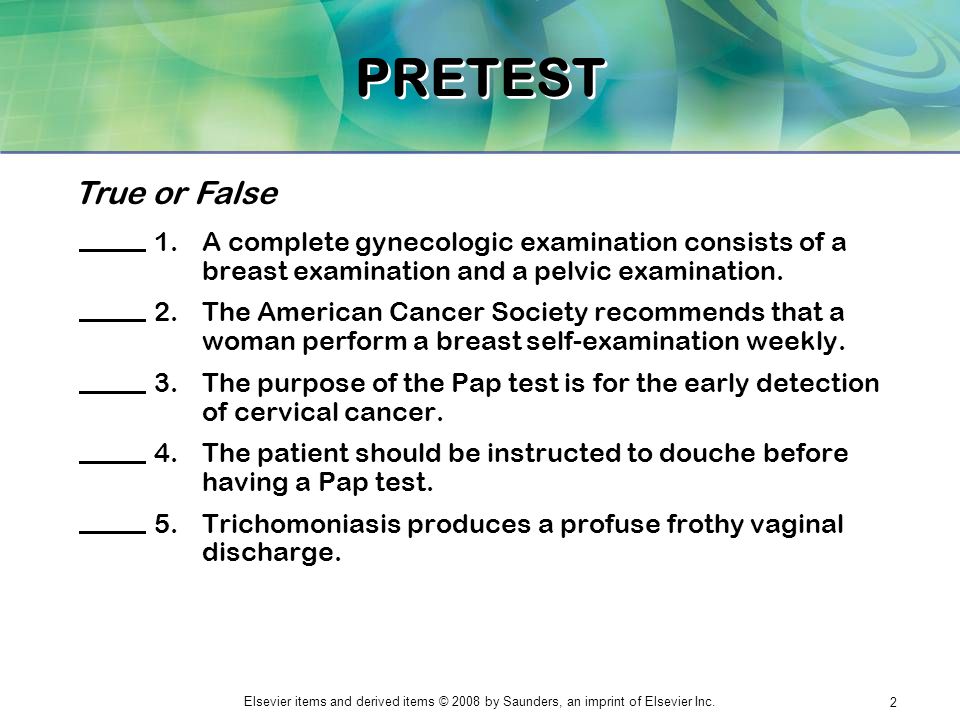 However, in some cases HPV may take longer to clear from the body, increasing the risk of developing cervical cancer.
However, in some cases HPV may take longer to clear from the body, increasing the risk of developing cervical cancer.
If HPV is found, additional tests will automatically be done on the same sample of cells in the laboratory. Your doctor will let you know what will happen next. Depending on the results of all of the tests, you might have a repeat cervical screening test in 12 months, to see if the HPV infection has cleared, or might have a follow-up procedure called a colposcopy.
It’s important to remember that HPV infections usually clear on their own. Also keep in mind that most abnormal cells are not cervical cancer, and can usually be treated quickly and painlessly.
If it is confirmed to be cervical cancer, here is some useful information to help you cope after a diagnosis of cervical cancer.
What if I’ve had an abnormal Pap test result before?
If a past Pap test picked up an abnormality, you will continue to have personalised care from your specialist or doctor.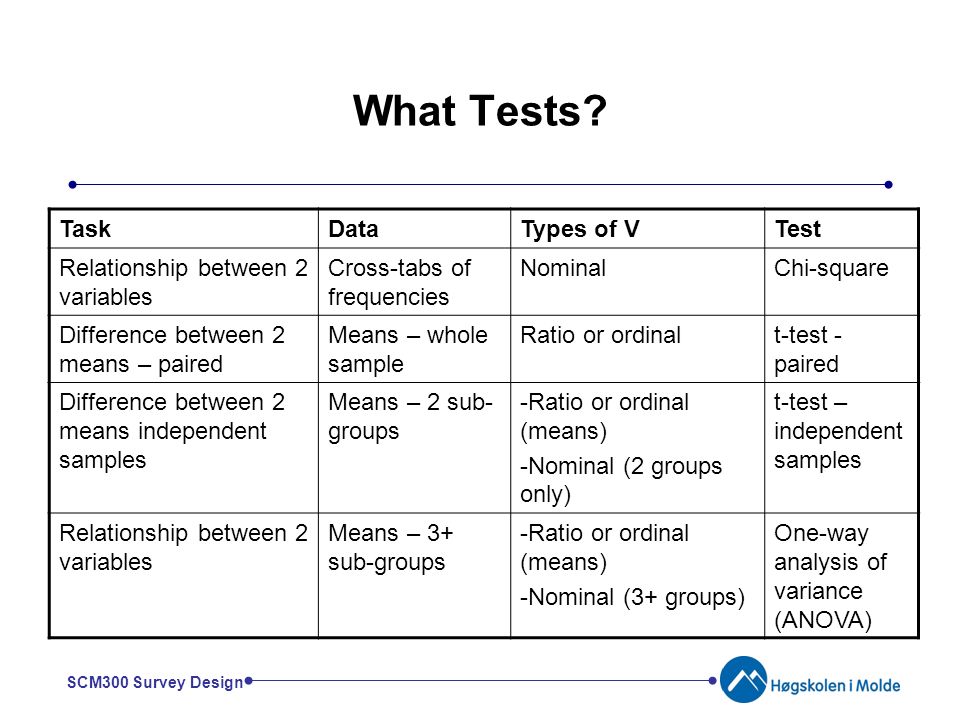 This might include regular appointments and tests for a period of time.
This might include regular appointments and tests for a period of time.
Cancer Council recommends that women of any age who have symptoms (including pain or abnormal vaginal bleeding or discharge) should see their doctor immediately.
For more information
Other useful websites
National Cervical Screening
HPV and Pap Testing – National Cancer Institute
Arbyn M, Smith SB, Temin S, et al. Detecting cervical precancer and reaching underscreened women by using HPV testing on self samples: Updated meta-analyses. BMJ 2018; 363:k4823.
[PubMed Abstract]
Castle PE, Kinney WK, Xue X, et al. Role of screening history in clinical meaning and optimal management of positive cervical screening results. Journal of the National Cancer Institute 2018 Dec 21. doi: 10.1093/jnci/djy192.
[PubMed Abstract]
Clarke MA, Cheung LC, Castle PE, et al.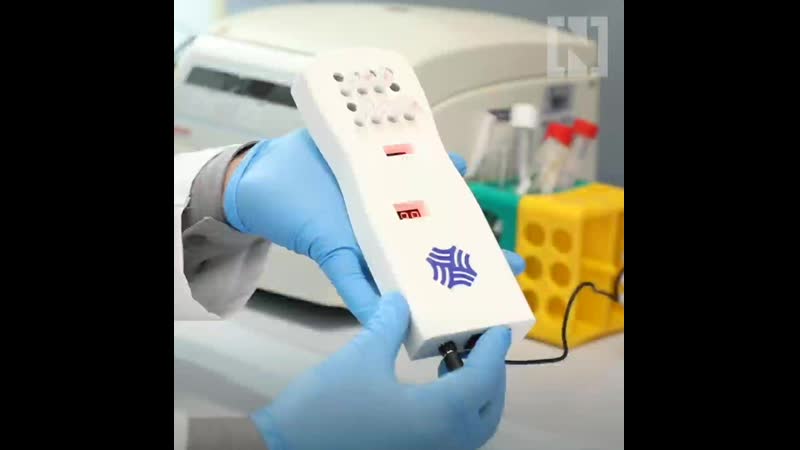 Five-year risk of cervical precancer following p16/Ki-67 dual-stain triage of HPV-positive women. JAMA Oncology 2018 Oct 11. doi: 10.1001/jamaoncol.2018.4270.
Five-year risk of cervical precancer following p16/Ki-67 dual-stain triage of HPV-positive women. JAMA Oncology 2018 Oct 11. doi: 10.1001/jamaoncol.2018.4270.
[PubMed Abstract]
Clarke MA, Fetterman B, Cheung LC, et al. Epidemiologic evidence that excess body weight increases risk of cervical cancer by decreased detection of precancer. Journal of Clinical Oncology 2018; 36(12):1184–1191.
[PubMed Abstract]
Gage JC, Schiffman M, Katki HA, et al. Reassurance against future risk of precancer and cancer conferred by a negative human papillomavirus test. Journal of the National Cancer Institute 2014; First published online: July 18, 2014. doi:10.1093/jnci/dju153
[PubMed Abstract]
González P, Hildesheim A, Rodríguez AC, et al. Behavioral/lifestyle and immunologic factors associated with HPV infection among women older than 45 years. Cancer Epidemiology, Biomarkers & Prevention 2010; 19(12):3044-3054.
Cancer Epidemiology, Biomarkers & Prevention 2010; 19(12):3044-3054.
[PubMed Abstract]
Hu L, Bell D, Antani S, et al. An observational study of deep learning and automated evaluation of cervical images for cancer screening. Journal of the National Cancer Institute 2019 Jan 10. doi: 10.1093/jnci/djy225.
[PubMed Abstract]
Katki HA, Kinney WK, Fetterman B, et al. Cervical cancer risk for women undergoing concurrent testing for human papillomavirus and cervical cytology: A population-based study in routine clinical practice. Lancet Oncology 2011; 12(7):663-672.
[PubMed Abstract]
Polman NJ, Ebisch RMF, Heideman DAM, et al. Performance of human papillomavirus testing on self-collected versus clinician-collected samples for the detection of cervical intraepithelial neoplasia of grade 2 or worse: a randomised, paired screen-positive, non-inferiority trial. Lancet Oncology 2019; 20(2):229-238.
Lancet Oncology 2019; 20(2):229-238.
[PubMed Abstract]
Ronco G, Dillner J, Elfström KM, et al. Efficacy of HPV-based screening for prevention of invasive cervical cancer: follow-up of four European randomised controlled trials. Lancet 2014; 383(9916):524-532.
[PubMed Abstract]
Rositch AF, Burke AE, Viscidi RP, et al. Contributions of recent and past sexual partnerships on incident human papillomavirus detection: acquisition and reactivation in older women. Cancer Research 2012; 72(23):6183-6190.
[PubMed Abstract]
Schiffman M, Castle PE, Jeronimo J, Rodriguez AC, Wacholder S. Human papillomavirus and cervical cancer. Lancet 2007; 370(9590):890-907.
[PubMed Abstract]
Schiffman M, Wentzensen N, Wacholder S, et al. Human papillomavirus testing in the prevention of cervical cancer. Journal of the National Cancer Institute 2011; 103(5):368-383.
Journal of the National Cancer Institute 2011; 103(5):368-383.
[PubMed Abstract]
U.S. Preventive Services Task Force, Curry SJ, Krist AH, et al. Screening for cervical cancer: US Preventive Services Task Force Recommendation Statement. JAMA 2018; 320(7):674-686.
[PubMed Abstract]
Wheeler CM. Natural history of human papillomavirus infections, cytologic and histologic abnormalities, and cancer. Obstetrics and Gynecology Clinics of North America 2008; 35(4):519-536; vii.
[PubMed Abstract]
Cytological smear (Pap smear, Pap test)
In recent years, oncological diseases, including endometrial and cervical cancer, have become increasingly common. To diagnose them, a method such as a Pap smear test or a Pap test is used, which allows you to identify cancer cells in the secretion of the vagina. The technique is quite simple, painless for the patient and gives results with high accuracy, but in Perm, such a study is not carried out in every clinic. We are ready to offer our patients to have a Pap smear.
We are ready to offer our patients to have a Pap smear.
Pap smear at a glance
Analysis refers to a cytological procedure in which a sample is stained with special compounds. The material is taken by scraping from the upper layer of the cervix, and after staining it is examined under a microscope. In addition to endometrial cancer, the Pap test can detect oncology in other organs:
- in the lungs;
- in the stomach;
- in the bladder.
For these purposes, other biological excretions are collected from patients – urine, feces or sputum. With the Pap test, tissue samples taken with a biopsy can also be examined.
Cervical cancer is more often diagnosed in women using this technique than other types of oncology. To obtain a biomaterial, the patient sits in a gynecological chair, then a scraping is taken from the transition zone of the cervix. The resulting sample is applied to a glass slide, fixed, stained and examined under a microscope. An experienced laboratory technician will immediately see cancer or abnormal cells if they are present in the material.
An experienced laboratory technician will immediately see cancer or abnormal cells if they are present in the material.
How to prepare for a cytological smear
The material is taken for research during a standard gynecological examination in cases when a woman does not take contraceptives and hormonal drugs. These drugs can alter the composition of the mucus and the upper layer of the cervix, making it more likely that the result is wrong.
Test preparation rules:
- to stop sexual intercourse in two days;
- stop injecting drugs into the vagina, and also do not douche or put cotton swabs two days before the appointed date;
- to be tested for cervicitis, if found – to cure it, if possible.
Taking a smear for subsequent cytological examination can be performed on any day, with the exception of menstruation. Also, the material is not taken if there is bleeding from the uterus. If necessary, a Pap test can be done during menstruation, but the effectiveness will be significantly reduced.
How often should the Pap test be done
Taking a smear for a Pap test can be carried out at the time of a routine examination, for this, the recommendations of doctors are taken into account, indicating the frequency of the study depending on the age range:
- 21-29 years old – every 3 years;
- 30-65 years old – every 5 years;
- upon reaching 65 years of age, the last screening is done, if there were no previous positive test results.
Residents of the Perm Territory who are at risk or have reached the age of 21 can be tested for cervical cancer at our medical center. Make an appointment at a convenient time for you now, without postponing the examination until tomorrow. Remember that cancer can be successfully treated at an early stage.
Pap smear (PAP test) or smear for oncocytology
The founder of Russian gynecology, Professor Vladimir Fedorovich Snegirev often used to say:
“What have I seen the most? Cancer.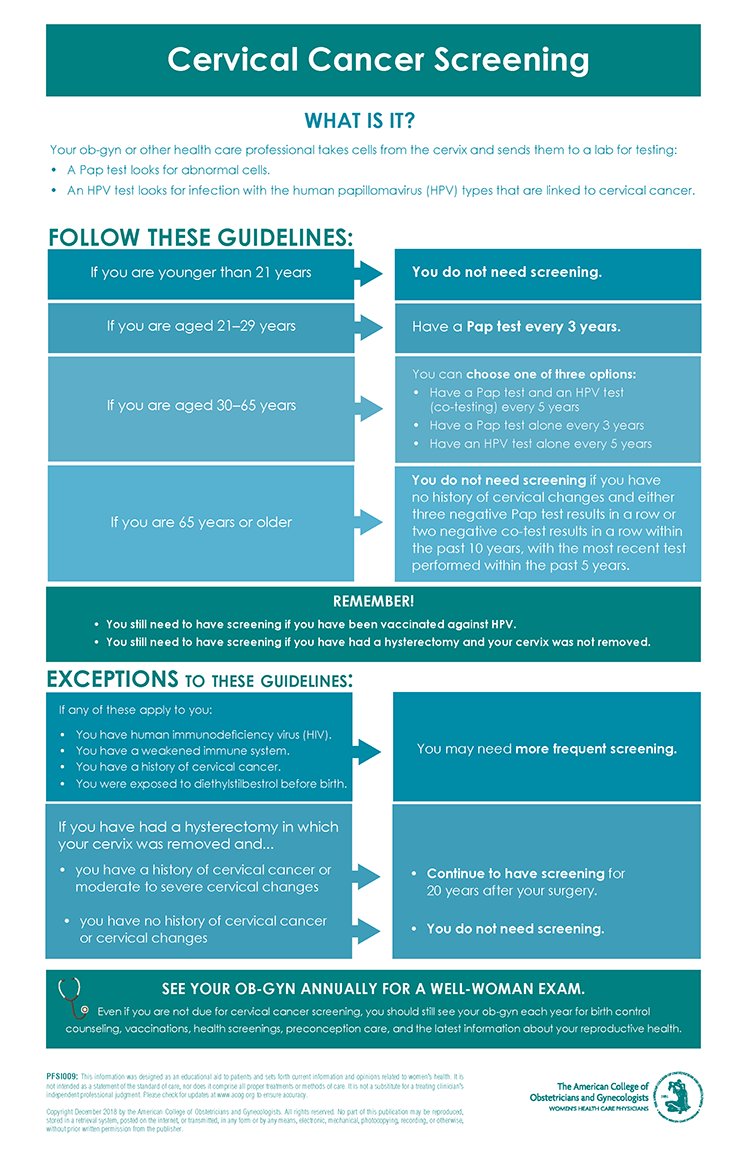 What do I know least of all? Cancer. “
What do I know least of all? Cancer. “
Many decades have passed, but oncological diseases of the uterus, ovaries and mammary glands still claim the lives of many Russian women. The fact is that the tissues subject to the greatest hormonal changes during the menstrual cycle are most prone to malignant degeneration
- A special place among various types of cancer of the female genital organs is occupied by
cervical cancer . Among all female cancers, cervical cancer ranks second after breast cancer.Its specificity lies in the fact that it often develops against the background of benign processes. Refusal of preventive examinations, early onset of sexual activity, sexually transmitted diseases, abortions, bad habits are factors that contribute to the development of cervical diseases. Therefore, more and more experts are talking about the epidemic of cervical cancer that has swept the modern world.
Such simple and affordable diagnostic methods: Pap smear and colposcopy – allow you to catch the initial precancerous changes and carry out simple and effective treatment at an early stage.
That is why, if every woman finds the opportunity to undergo such an examination every year, death from cervical cancer will be prevented.
Pap smear = Oncocytology is a simple and effective test for detecting abnormalities in the cell structure of the cervix.
The test was developed in 1943, but even now, using this test, abnormalities in cells at the precancerous stage are detected. With the right plan of further action, all abnormalities can be successfully healed !!!.
Who needs a Pap smear?
Pap smear should be done for all women who are sexually active. It is recommended that the woman have this smear once a year. A Pap smear should not be done during menstruation or if there is an inflammatory process in the vagina. During the day before taking a smear, you should not live sexually, use spermicidal creams, vaginal douches, douches or tampons, because all this can interfere with the correctness of the study.
How is a Pap smear done?
A Pap smear is part of a routine pelvic exam and is quick and painless.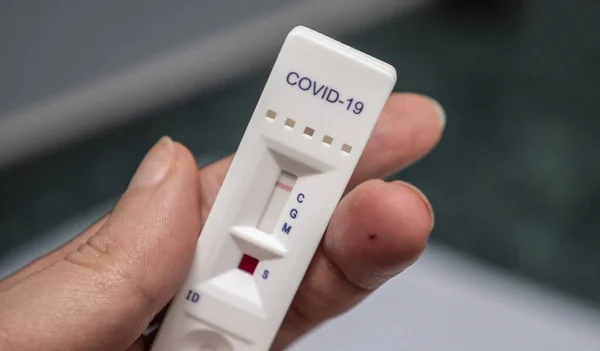 During the examination, the doctor obtains a certain amount of cells from the cervix. To collect cells, a small brush is used with which a smear is made on a glass plate. After that, the slides are sent to the laboratory, where specially trained cytologists examine them under a microscope.
During the examination, the doctor obtains a certain amount of cells from the cervix. To collect cells, a small brush is used with which a smear is made on a glass plate. After that, the slides are sent to the laboratory, where specially trained cytologists examine them under a microscope.
How and where to get a Pap smear?
You can take the analysis in our clinic at a time convenient for you, including at a consultation.For the convenience of our patients, we work seven days a week from morning to evening. The analysis is not given on the days of menstruation.
What are the Pap smear results?
A Pap test is normal (negative) when all cells are of normal size and shape. An abnormal (positive) smear occurs when cells with abnormalities in shape and size are found. To describe the degree of abnormality, special terminology is used: inflammatory process, intraepithelial damage of low or high degree.An abnormal Pap smear does not always mean a woman has cancer.
What are the causes of abnormal Pap smear results?
In the presence of an infection such as thrush, Trichomonas, chlamydia, or gonococcus, the cells in the cervix show signs of inflammation and appear abnormal. After the infection is treated, the Pap smear usually returns to normal.
Human papillomavirus is a common cause of abnormalities in Pap smears. The virus can be present in the cervix and also cause genital warts.There are many types of human papillomavirus, some of which are associated with an increased risk of cervical cancer. Therefore, women who have found human papillomavirus are at risk of developing cervical cancer.
Cancer cells are the most abnormal cells found in a Pap smear. In pre-invasive cancer, only the superficial cells are affected. Invasive cervical cancer means that the disease has expanded beyond the surface layer of cells.
What do you do if your Pap smear is abnormal?
The plan of action depends on the degree of cellular changes described by the cytologist. If the changes are associated with inflammation, then the smear is usually repeated after a few months. Appropriate treatment can be prescribed if necessary. Smears in which low-grade abnormalities are found can be repeated after a few months with a control colposcopy. A high degree of deviation is always an indication for colposcopy.Patients with smear abnormalities are advised to use condoms or abstain from intercourse until the examination is completed.
If the changes are associated with inflammation, then the smear is usually repeated after a few months. Appropriate treatment can be prescribed if necessary. Smears in which low-grade abnormalities are found can be repeated after a few months with a control colposcopy. A high degree of deviation is always an indication for colposcopy.Patients with smear abnormalities are advised to use condoms or abstain from intercourse until the examination is completed.
What is colposcopy?
The colposcope is a microscope-like instrument that allows the physician to magnify the vulva, vagina and cervix so that areas with changes can be more easily identified. The patient is placed on a gynecological chair and a gynecological speculum is inserted into the vagina.The doctor lubricates the cervix with special solutions that make it easier to see cellular abnormalities. The colposcope itself does not touch the patient. Colposcopy is not done during menstruation. 24 hours before colposcopy, the patient should not do douching, use vaginal gels, ointments or tampons, because this can affect the accuracy of the study./doctor-holding-cervical-smear-equipment-758310077-cf1116f291714ffa8f515d8f023537ce.jpg)
Analysis of a smear for oncocytology has a greater diagnostic quality when conducting a colposcopic targeted examination of the cervical tissue.
What is done if cellular changes are detected during colposcopy?
In case of detection of cellular abnormalities, the doctor may take a biopsy. A biopsy is the removal of a small piece of tissue from an altered area. The woman may feel a sharp prick or discomfort (some women may not feel anything at all). For several days after the biopsy, there may be slight bloody or spotting discharge from the genital tract. The tissue sample is sent to the histological laboratory, where it is examined by a specialist under a microscope in all sections.
What if the biopsy shows abnormalities?
Medical advice will depend on the histological report. At the Za Rozhdeniye clinic, experienced doctors-experts in cervical pathology will prescribe the appropriate treatment and follow-up plan with a repeat Pap smear at regular intervals. It is possible that procedures with the use of electric wave therapy or laser therapy will be prescribed to remove altered cells.
Dear women, remember the procedure for examining the cervix once a year
COLPOSCOPY WITH ONCOCYTOLOGY
will save you from fears of cervical cancer !!!
Related articles
Smear for cytology of the cervix (Papanicolaou oncocytology) (PAP smear)
What is it for
Pap smear (PAP smear, smear for cervical cytology) is a modern method for diagnosing abnormalities in the cervical cells.Allows you to catch the initial precancerous changes and carry out simple and effective treatment at an early stage.
A Pap smear is recommended once a year for all women who are sexually active. HPV infection, precancerous changes, and early stages of cancer may not show up in any way.
With the help of a PAP smear, atypical cells of the cervix and cervical canal can be detected. Various bacterial, fungal and viral infections can be detected during the analysis.
The PAP smear also detects precancerous diseases of the cervix, which prevents the development of cancer. Also, this study serves to detect cervical cancer at the earliest stages, when the disease is treatable. Also, a PAP smear is used to monitor the state of the mucous membrane of the cervix when detecting changes, detecting HPV (HPV, human papillomavirus).
This is part of a routine pelvic exam. During the examination, the doctor receives a certain amount of cells from the cervix with a small spatula and a soft-bristled brush, with the help of which a smear is made on a glass plate.After taking a sample, the glass is stained in a special way. Unlike oncocytological smears, when conducting a Pap smear, a specially selected composition of fixatives and paints is used, which makes it possible to identify early precancerous diseases of the cervix with the highest degree of reliability.
The presence of certain types of HPV (human papillomavirus), allocated to the HPV group of high oncogenic risk, are associated with an increased risk of cervical cancer. Therefore, the doctor may prescribe a PAP smear along with the determination of HPV by PCR.
According to the recommendations of The American College of Obstetricians and Gynecologists (ACOG), women from 21 to 29 years old are recommended to have a PAP smear once every two years, over 30 years old – a PAP smear and HPV once every 3 years, if both results are good. The U.S. The Preventive Services Task Force (USPSTF) and the American Cancer Society recommend screening every 3 years.
A more frequent analysis is indicated for women with HIV infection, immunodeficiency, after treatment for cancer or precancerous diseases (CIN 2, CIN 3), with frequent change of sexual partners, and also with various gynecological diseases (bleeding, pain, inflammatory diseases, discharge, itching).Also, more frequent screening is indicated if changes in previous results of a PAP smear are detected or papillomavirus is detected.
We recommend annual screening for all women who are sexually active.
Value of analyzes
The conclusion on the PAP smear is issued according to the international classification of The Bethesda system (TBS) .
A normal PAP smear result means no precancerous lesions, cancerous cells, or signs of infection or inflammation are found.
If changes in the PAP smear are detected, additional research methods are shown. In case of infection – PCR diagnostics, bacteriological studies, with precancerous changes and the presence of cancer cells – colposcopy, cervical biopsy.
Downloads
Booklet “Cancer of the cervix. PAP smear “
90,000 PAP test – consultations and diagnosis of diseases, high-quality treatment in Israeli clinics
Get advice
What is a PAP test?
Pap test is a gynecological examination at the cellular level, which has a high level of accuracy and information content.Today, fathers take a smear for cytology without fail during the examination of the patient on the gynecological chair. It is the pap test that allows you to determine the smallest changes in the nature of the vagina at the cellular level, which can cause the subsequent development of cancerous tumors. Detection of pathological processes at an early stage will make it possible to make an adequate decision in the appointment of effective treatment.
To whom, when and why is the dad analysis performed?
- A pap smear is performed annually for every woman, starting at the age of majority or in the event of sexual intercourse.
- If a woman is taking oral contraceptives or has genital herpes, then a pap smear test is done twice a year.
- At risk are women who are obese and change multiple sex partners in a short period of time. In these patients, a pap smear is taken more frequently.
With age, the risk of developing cervical cancer becomes higher, so you should take the dad test regularly. It is worth noting that the risk does not diminish with the onset of menopause.
How is PAP analysis taken?
A smear is taken from the surface layer of the cervix using a professional spatula. The material is applied to a special glass and sent to the laboratory for further study. There it is stained according to the Papanicolaou technique and examined for abnormalities in the structure and development of cells.
You can take a swab at any time, except during your period. Two days before going to the gynecologist, you should avoid sexual intercourse, the use of vaginal creams, suppositories, syringes.
PAP test analysis: evaluation of results
There are five stages of gynecological pathology.
- First – there are no abnormal cells, the patient’s health is normal.
- Second – there is an inflammatory process, the presence of infection.
- Third – there are several abnormal cells that can cause oncology.
- Fourth – clear pathological changes in the cells were detected, a biopsy is prescribed without fail.
- Fifth – cancer cells are clearly visible, and there can be no doubt about the diagnosis.
However, despite its greater accuracy, the liquid cytology pap test is not the only basis for diagnosis. In addition, other tests are always prescribed, which together help to confirm the result.
90,000 What is a Pap smear?
Cervical cancer is a cancer that affects many women every year, and half of them die from the disease.Statistics fall from year to year thanks to a preventive program based on cytological research. Cytology is a quick and painless test that allows you to diagnose precancerous conditions and cancers at an early stage. Learn when to have a Pap test and how to prepare for it. What to do in case of an incorrect result?
What is cytology and what does the examination look like?
Early detection of pathologies of the intervertebral disc and cervical canal based on a smear of cells from this area is the essence of cytological diagnosis.The area from which cells are collected for research is the border between two types of epithelium: non-keratinized squamous epithelium (lining the vaginal vault and the outer surface of the cervix) and monolayer glandular (present in the cervical canal). It is where both epitheliums meet that 90% of cervical pathology develops. The vast majority of these are caused by the sexually transmitted human papillomavirus (HPV). Infection with this pathogen does not immediately mean the development of a tumor.There are more and fewer oncogenic subtypes. Our immune systems can also fight this type of infection. If the virus is already infected and the process of oncogenesis has begun, it lasts so long that with regular cytological examination it can be detected at a very early stage and effective treatment can be applied. Pap smear consists of taking a swab from the disc and cervical canal. After insertion of the dilator into the vagina and good visualization of the vaginal part of the cervix, the gynecologist or midwife inserts a sterile cytological brush into the vagina under visual control so that its middle part is in the outer orifice of the cervical canal and makes a complete revolution.The hand has such a profile that it can collect both types of epithelium. The collected material is evenly applied to a glass slide and fixed with an appropriate fixative or placed in a special container with a liquid medium (thin-layer liquid cytology – LBC). The preparation made in this way is evaluated by cytodiagnostics under a microscope. The swab should be taken prior to pelvic exam and transvaginal ultrasound and is a screening test. It should not be used as a definitive diagnosis of cervical involvement.
Cytology – When To Carry Out?
The initiation of cytological diagnosis depends on several factors, and the decision on its implementation should be made individually for each woman. However, the first cytological examination should be performed within 3 years from the onset of intercourse, regardless of age, and should be repeated annually for the next 3 years. If the result of the next 3 tests was normal, the next tests can be performed every 3 years. Sexually inactive women, it is recommended to have the first Pap smear after 25 years, and also to repeat it every 3 years.Similar recommendations are contained in American guidelines, which suggest starting cytological diagnostics in women without an increased risk of cervical cancer after 21 years of age and repeating it every 3 years. Patients with risk factors, such as HIV infection, taking immunosuppressants, infection with a highly oncogenic HPV virus (HPV-16, -18), should undergo a cytological examination of the cervix every 12 months. Women treated for a malignant neoplasm of the cervix, after completing oncological control, are re-included in the screening cycle, which is decided by the attending oncologist.
Cytology – How to Prepare?
In order for the collected material to be of the highest quality, a woman should follow several recommendations before the examination:
• refrain from sexual intercourse 2-3 days before the examination;
• do not use vaginal preparations 2-3 days before the examination;
• do not irrigate the vagina 2-3 days before the test;
• Do not have a Pap smear during menstrual bleeding or perimenstrual bleeding.
Cytology should not be performed earlier than the 4th day after menstruation and no later than the 4th day before the next menstruation.In addition, at least 1 week should elapse after the last gynecological / transvaginal ultrasound examination.
Cytology during pregnancy
Cytology is a safe test that is mandatory for pregnant women. A Pap smear should be given to a pregnant woman before the 10th week of its duration or at the first visit if such a test has not been performed in the last 6 months.
Cytology in a virgin
The preserved vaginal crown (hymen – the fold of the mucous membrane that limits the entrance to the vagina), commonly known as the hymen, is not a contraindication for collecting material for cytological examination, which does not mean that every gynecologist will do it.This is due to the fear of damaging the fold of the mucous membrane and the lack of appropriate equipment. Pap smears for women who have not had intercourse are recommended after age 25. In order not to damage the vaginal rim, when trying to take a smear, the doctor must conduct this study skillfully and carefully using a special mirror.
Cytology brush – which smear to take?
Use a specially shaped sterile brush specially designed for this purpose to collect the cytological test.The brush provides more efficient sampling and reliable cell transfer, thereby improving test quality and accuracy.
Cytology – Results
The only valid classification for cervical swabs is the Bethesda 2001 system. This is a descriptive scale, not a gradual scale. A normal cytological result is defined as the absence of suspicion of intraepithelial neoplasia and cancer (NILM – No Intraepithelial Lesion or Malignancy). The following cytological findings are abnormal:
• ASC – atypical squamous epithelial cells; this group was divided into two subgroups:
• ASC-US – atypical squamous cells of undetermined significance;
• ASC-H – atypical epithelial cells, in which the presence of highly malignant changes cannot be excluded, that is, HSIL;
• LSIL – a small degree of changes in squamous epithelial cells;
• HSIL – high degree of changes in squamous epithelial cells;
• AGC – atypical changes in glandular cells.
Cytological findings may directly indicate the presence of squamous cell carcinoma or adenocarcinoma cells. The description of the results of cervical cytology according to the withdrawn Pap test scale is inappropriate, insufficient and incompatible with the current recommendations of scientific societies. The result is a pointer to what to do next. Correct result (NILM) does not require further treatment. In turn, the ASC-US and LSIL results increase our vigilance, requiring in-depth diagnostics and more frequent follow-up.Moreover, they increase our alertness and enhance the effects of HSIL, ASC-H, AGC results, or direct us directly to therapeutic treatments (squamous cell / glandular carcinoma). It is worth remembering that the Pap smear is just a screening test, the final diagnosis is made on the basis of a biopsy of the suspected lesion and histopathological analysis.
Make Pap test – Papanicolaou cytology
Analysis for early detection of oncological changes in the cervix was named after the founder of medical cytology, Georgios Papanikolaou.It is recommended for all girls and women who are sexually active. In case of negative PAP results, the study can be carried out once a year. If a woman is at risk, then Papanicolaou cytology is performed by a doctor more often, depending on the specific clinical case. The factors that provoke the development of cervical and vaginal cancer include:
- Identification of HPV types in the body that have a high oncogenic risk.
- Smoking.
- Immunodeficiency diseases.
- Frequent genital infections.
- Hereditary predisposition, that is, the presence of cancer diagnoses of the reproductive system in relatives.
It is also important to know that women who have more than 4 sexual partners in their entire life are at risk of developing cervical cancer.
The PAP test is a simple but effective method for the early detection of many gynecological diseases, including cervical cancer.
How to prepare properly?
To obtain a reliable result 3 days before the study, adhere to the following recommendations:
- do not use vaginal preparations: suppositories, creams, tablets;
- do not use tampons;
- do not douche;
- Observe sexual rest.
Come to the gynecologist for examination!
In a medical center with a European approach, the French Clinic, you can complete this study in a comfortable environment and as quickly as possible. Our experienced gynecologists will provide detailed advice based on the analysis results.
Leave your phone number.
The clinic administrator will call you back.
Cytology pap test is prescribed in the middle of the cycle, but no later than 5-6 days before the onset of menstruation.Also, if you underwent a vaginal ultrasound or colposcopy, then at least 2 days should pass after the procedure. Contraindications are bleeding and exacerbation of gynecological diseases.
Course of procedure
This test is simple and is performed by a doctor in an office setting. It does not require pain relief or hospitalization.
- The woman is in the gynecological chair.
- A gynecologist uses a vaginal speculum to examine the genitals.
- Using a special cytological brush, the doctor makes a scraping from the outer surface of the cervix and cervical canal. Particular attention is paid to places where there are pathological changes in the mucous membrane.
- The resulting biomaterial is applied to a glass slide and fixed with an alcohol-containing solution. Or, together with a removable brush, it is placed in a container with an aqueous solution (liquid cytology).
- Sent to the laboratory.
The procedure takes no more than 5-7 minutes.After analysis, no discomfort or discomfort is usually observed. In rare cases, short-term scanty spotting from the genital tract is possible.
What diseases does it detect?
The main goal is to identify cancer cells and precancerous changes in the cervix. The analysis also reveals inflammatory changes and dysbiosis. The price of the PAP test depends on the method of testing and the timing of the result. Sign up for a consultation at the French Clinic to clarify the cost of the analysis.
Frequently Asked Questions
1. At what age is it recommended to take this test?
The PAP test must be done after the onset of sexual activity, then once a year in the absence of pathology.
2. The partner was diagnosed with HPV. Do I need to take a dad test?
If your partner has a virus, first of all, you also need to take a swab for HPV. The Pap test will allow you to control the situation and, if necessary, begin treatment.
3. Do I need to have a smear if I do not have ectopia?
This analysis is performed on all girls from the beginning of sexual activity. In addition to erosion, there may be other pathological phenomena on the cervix, which for years can go unnoticed for a woman.
Atypical glandular cells | MyPathologyReport.ca
What do atypical glandular cells mean?
An abnormal looking glandular cell result means that abnormal looking cells have been seen on your body.Dad tests. This is a preliminary, not a definitive diagnosis. The abnormal cells could have originated from the tissue lining the endometrium or cervix. Conditions associated with this outcome include cancer, infection, inflammation, pregnancy, or previous radiation exposure.
Cervix and endometrium
The cervix is part of the female reproductive tract. It is located in the lower part of the uterus, where it forms an opening in the endometrial cavity. The narrow passage that runs through the cervix from the endometrium into the vagina is called the endocervical canal.
The part of the cervix inside the vagina is called the exocervix. It is covered with special cells called flat cells. These cells form a barrier called the epithelium that protects the cervix. The endocervical canal is covered with different types of cells that join together to produce glands. These glands are called the endocervical glands.
The inside of the endometrial cavity is called the endometrium. The endometrium is also covered with cells that join together to form glands.These glands are called endometrial glands. Atypical glandular cells can originate from both the endocervical glands and the endometrial glands.
What do atypical glandular cells look like under a microscope?
atypical is the word pathologists use to describe cells that look abnormal when examined under a microscope. They are abnormal because they differ in shape, size, or color from the normal, healthy cells commonly found in that area of the body.
Atypical glandular cells are larger in size and the part of the cell that contains the genetic material of the cell, the nucleus, is darker than the healthy cells usually found in the cervix. Pathologists call these cells hyperchromatic. There is also a tendency for large differences in the size and shape of the nucleus between cells. In contrast, normal, healthy glandular cells tend to be roughly the same size and shape.
If atypical glandular cells are found, your pathologist will try to decide whether the glandular cells are from the endocervix or from the endometrium.If your pathologist can determine where the cells are coming from, this will be described in your report. An atypical glandular cell result means your pathologist was unable to determine if the cells came from the endocervix or from the endometrium.
Is it normal to see glandular cells on a Pap smear?
A normal Pap smear will mostly show flat cells although it is normal to find small clusters of endocervical glandular cells. Some Pap smears also show small groups of endometrial glandular cells.This is considered normal for young women.
However, detection of endometrial cells on a Pap smear in a postmenopausal woman is considered abnormal. In these women, an endometrial biopsy is recommended to investigate the source of the cells.
Do atypical glandular cells mean cancer?
Optional. There are many reasons why glandular cells can become atypical, including cancer, infection, inflammation, pregnancy, or previous radiation to the cervix or endometrium.The term “atypical glandular cells” is used when your pathologist does not have enough information to decide whether the abnormal cell groups are cancerous or not.
What does a favorable neoplasm mean?
If, after examining the tissue, your pathologist still cannot determine the cause of the atypical glandular cells, but believes that they are most likely cancerous cells, your report will also indicate “in favor of a neoplasm”. neoplasm This word pathologists use to describe abnormal cell growth and is similar to the word tumor.
Next Steps
After detecting abnormal glandular cells, your doctor should schedule a follow-up visit within 6 months or refer you to a specialist for additional tests. Depending on where you live, these additional tests may include:
- Colposcopy – This procedure allows your doctor to see the entire outer surface of the cervix. During a colposcopy, the doctor will look for abnormal areas on the surface of the cervix. If an abnormality is found, the doctor may decide to take a small tissue sample called a biopsy to look for precancerous and cancerous changes
- Endocervical curettage – During this procedure, the outer surface of the cervical canal is scraped off with a spoon-shaped instrument called a curette.The pathologist then examines the sample under a microscope. The main purpose of this procedure is to show the presence of any abnormalities in the endocervical canal.
- Endometrial biopsy – This procedure is performed to obtain a small sample of tissue from the lining of the uterus called the endometrium. The main purpose of this procedure is to show the presence of any abnormalities in the uterus.
- Ultrasound – This procedure can be performed to look for abnormalities in the uterus or cervix. Ultrasound can be useful for detecting increased endometrial thickening and / or the presence of neoplasms in the endometrial and endocervical cavities, as well as in the pelvis.

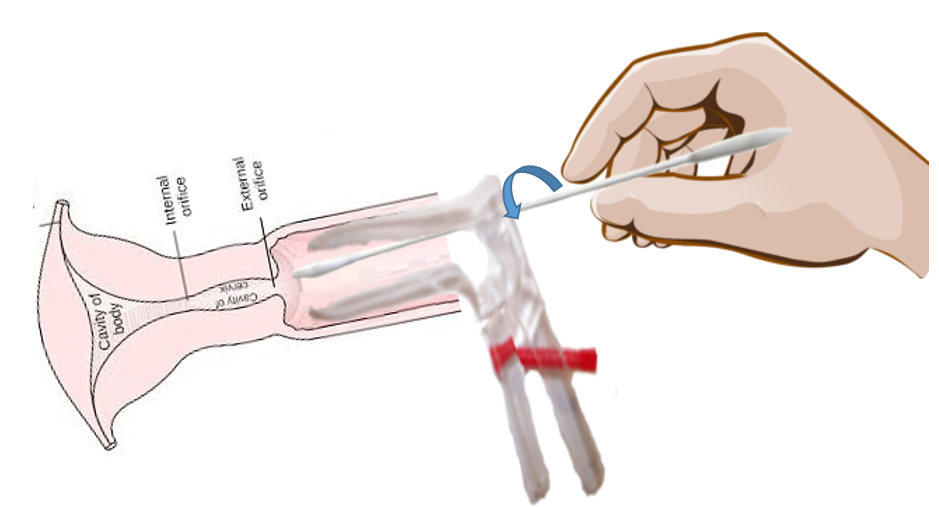


 If you do, there won’t be enough loose cells in your cervical fluid for an accurate test.
If you do, there won’t be enough loose cells in your cervical fluid for an accurate test.